Duke-UNC to take center stage in NYC in rare ACC tournament clash of rivals

BROOKLYN—As the sun began to set on Thursday afternoon, the buzz that had coursed through the Barclays Center all afternoon had now seeped, along with most of the 17,732 fans who had experienced it, out the door and into the streets surrounding the five-year-old building with the rust-colored exterior. North Carolina had beaten Miami in one ACC tournament quarterfinal. Duke had beaten Louisville in another. For four hours the building had come alive almost entirely thanks to Tar Heels fans cheering for their team and then rooting against the enemy, and Duke fans doing the same. Now, in a little more than 24 hours, the rivalry that has long electrified a state, a region and the entire college basketball world would be temporarily relocated from its permanent home in central North Carolina to provide a jolt to the biggest city in the country, and it was making those who were already giddy with anticipation do and say some strange things.
“I was rooting for Duke,” confessed one fan adorned in Tar Heel regalia. “I’ve never seen them play before.”
This is what the ACC’s first northern invasion has wrought, the truly unthinkable: North Carolina fans pulling for the Blue Devils, if only to get the chance to finally glimpse a game between two of the sport’s most prominent programs.
Bracket Watch: How conference tourney results are impacting the field
This is to say nothing of course, of the price some of those fans would be willing to pay to get back in the doors on Friday. Scalpers were offering—and appeared to have little trouble selling—tickets at more than double face value just minutes after No. 14 Duke closed out a scintillating 81–77 comeback win over the 10th-ranked Cardinals, which was the capper to No. 6 UNC’s 78–53 victory against Miami earlier in the day.
It figures to be worth it. The Blue Devils and the Tar Heels have already played a pair of predictably outstanding games this season, the first won by Duke at Cameron Indoor Stadium on Feb. 9, 86–78, the second won by North Carolina at the Dean E. Smith Center on March 4, 90–83. They were two of the four most-watched college basketball games of the season to date and they provided the most thrilling theater. Two games. Eighty minutes. Forty-one lead changes. Twenty-three ties. One point of separation.
The Tar Heels, the defending ACC tournament champions, are playing to secure a No. 1 seed in the NCAA tournament. They have the league’s Player of the Year in junior forward Justin Jackson, a first-team All-America. The Blue Devils are playing to possibly move as high as a No. 2 in the Big Dance. They have the possible No. 1 pick in the NBA draft in freshman forward Jayson Tatum and the leading vote getter for first-team All-ACC in sophomore guard Luke Kennard. Both coaches, Duke’s Mike Krzyzewski and North Carolina’s Roy Williams, are in the Hall of Fame. Both schools have won five national championships.
• Tracking every automatic bid to the NCAA tournament
“They’re a great program. We’re a great program. We’re two of the great programs,” Krzyzewski said afterward. “To be in that moment tomorrow, the people who were in the stands, they have a chance to enjoy that because those moments don’t happen all the time.”
North Carolina-Duke: Classic SI Photos
Feb. 8, 2012
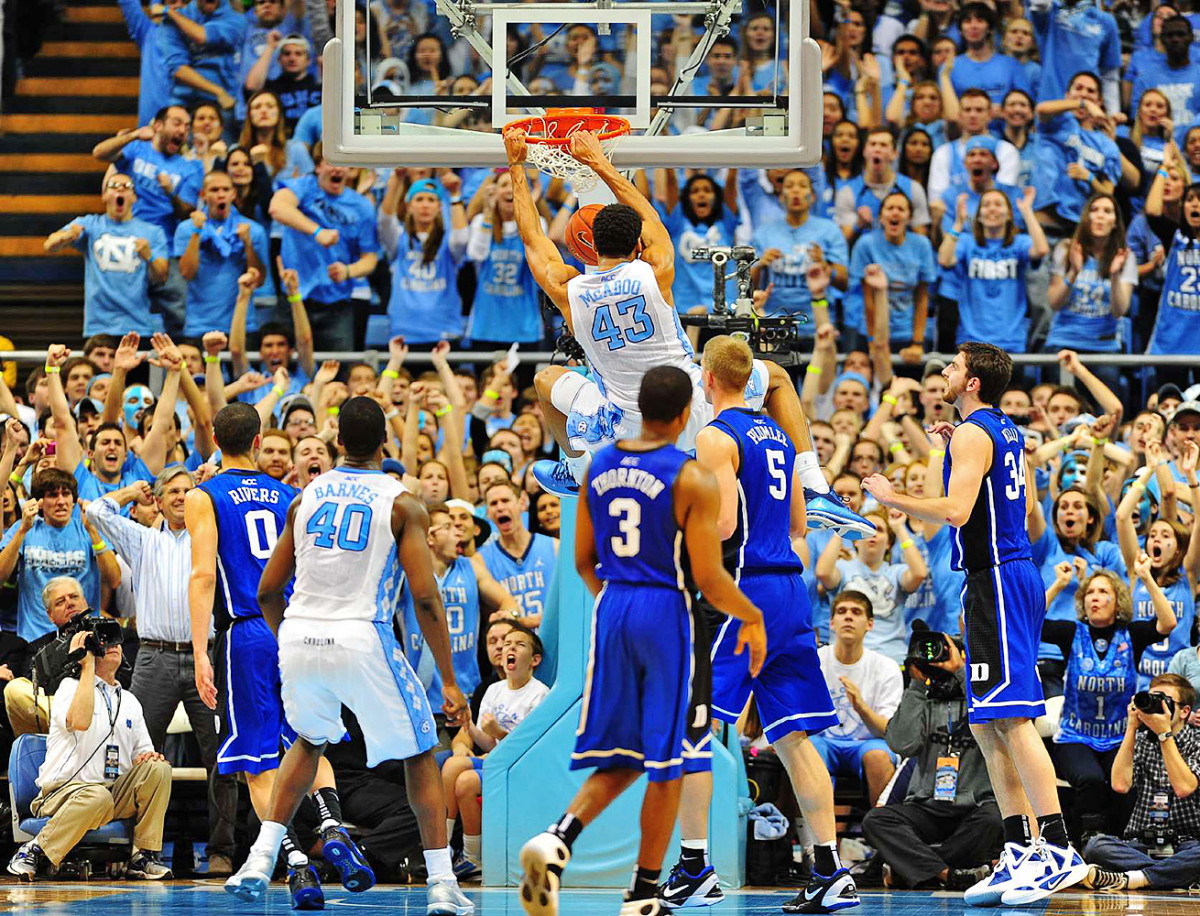
James Michael McAdoo
Feb. 8, 2012
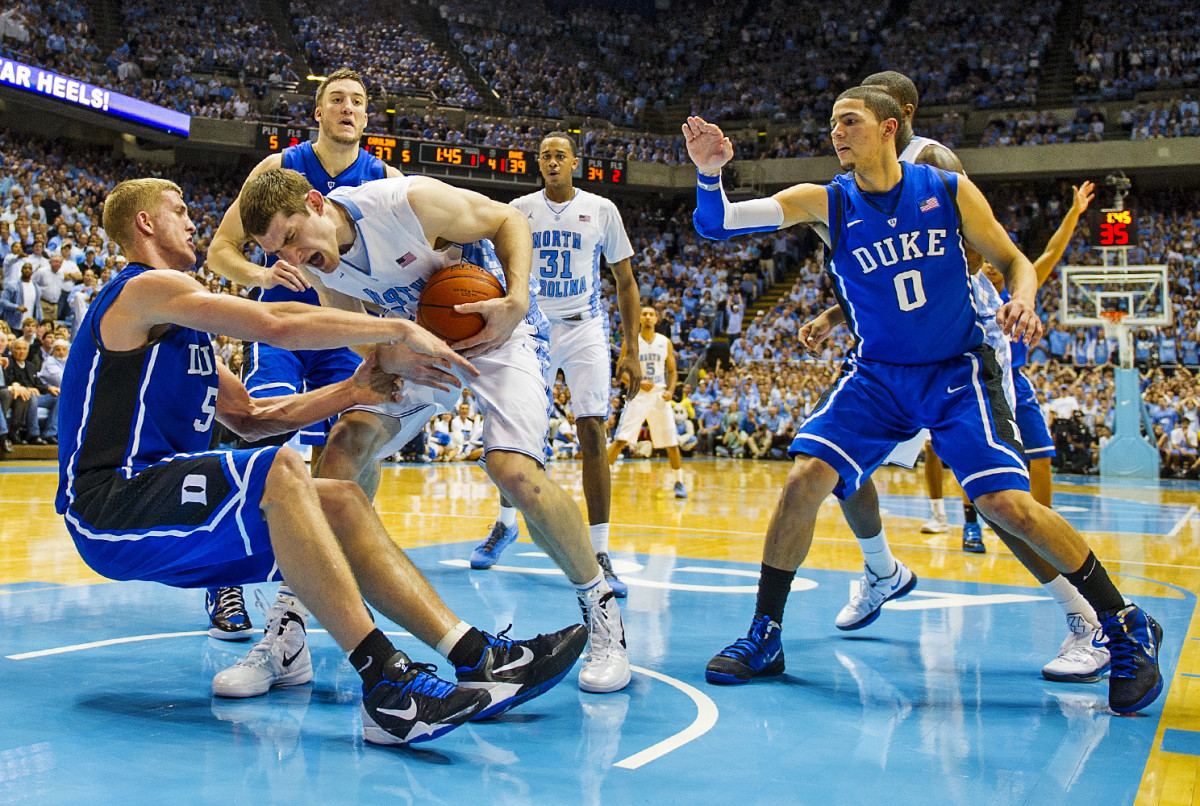
Mason Plumlee, Tyler Zeller
March 5, 2016
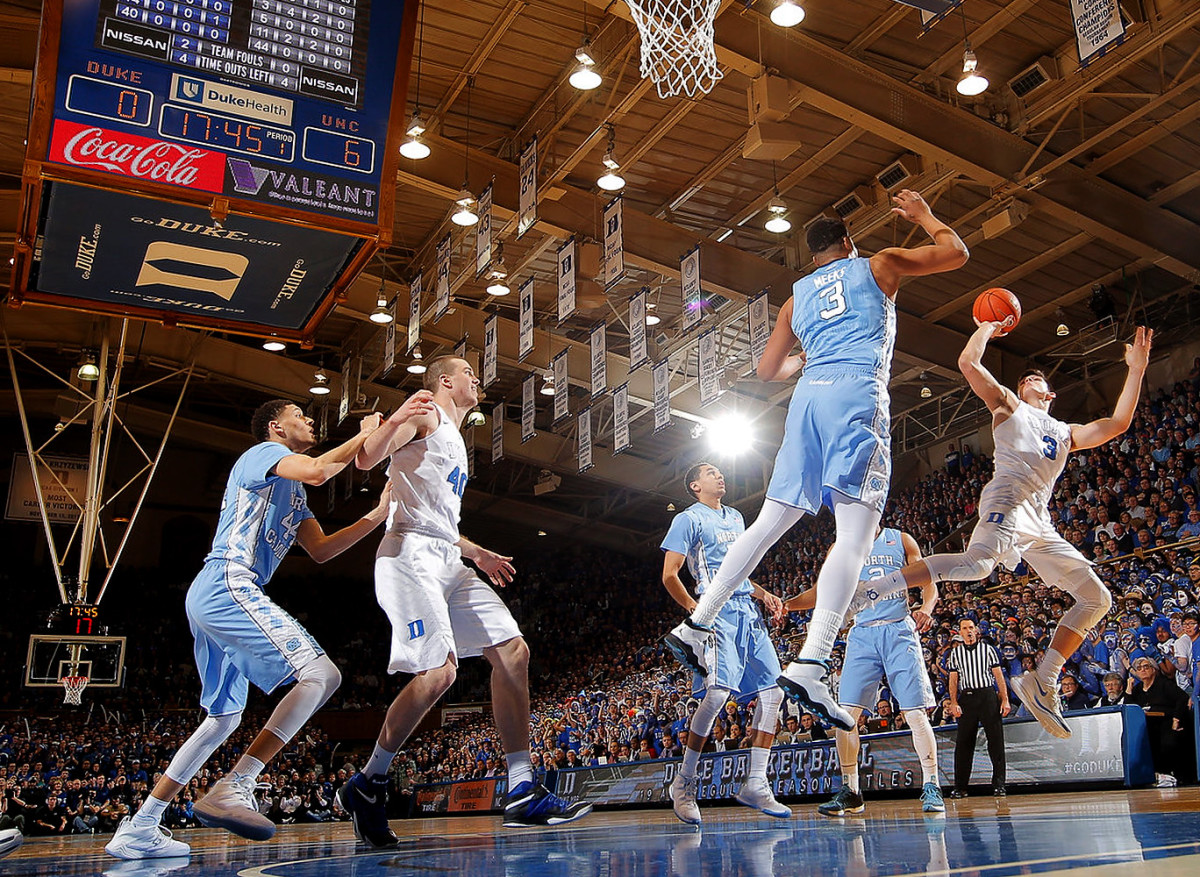
Grayson Allen of Duke
March 5, 2016
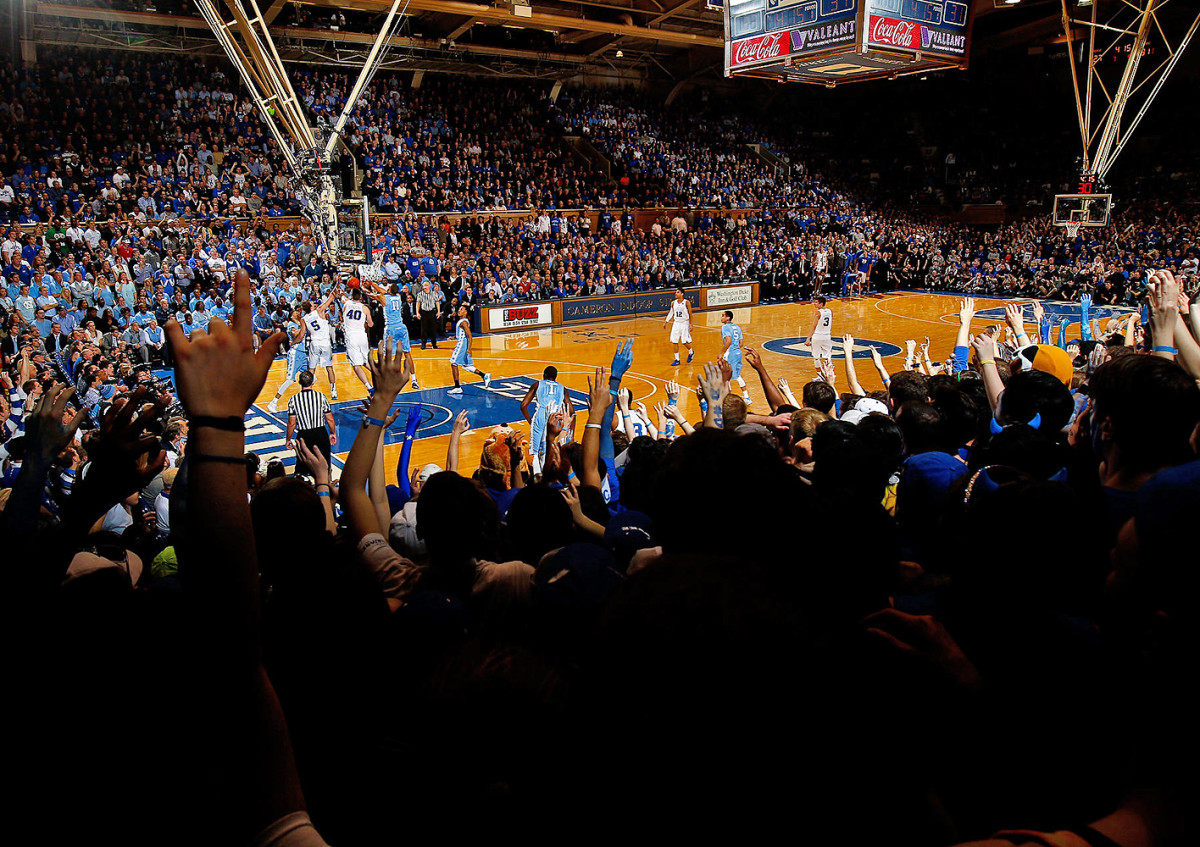
Brice Johnson of UNC
March 5, 2016
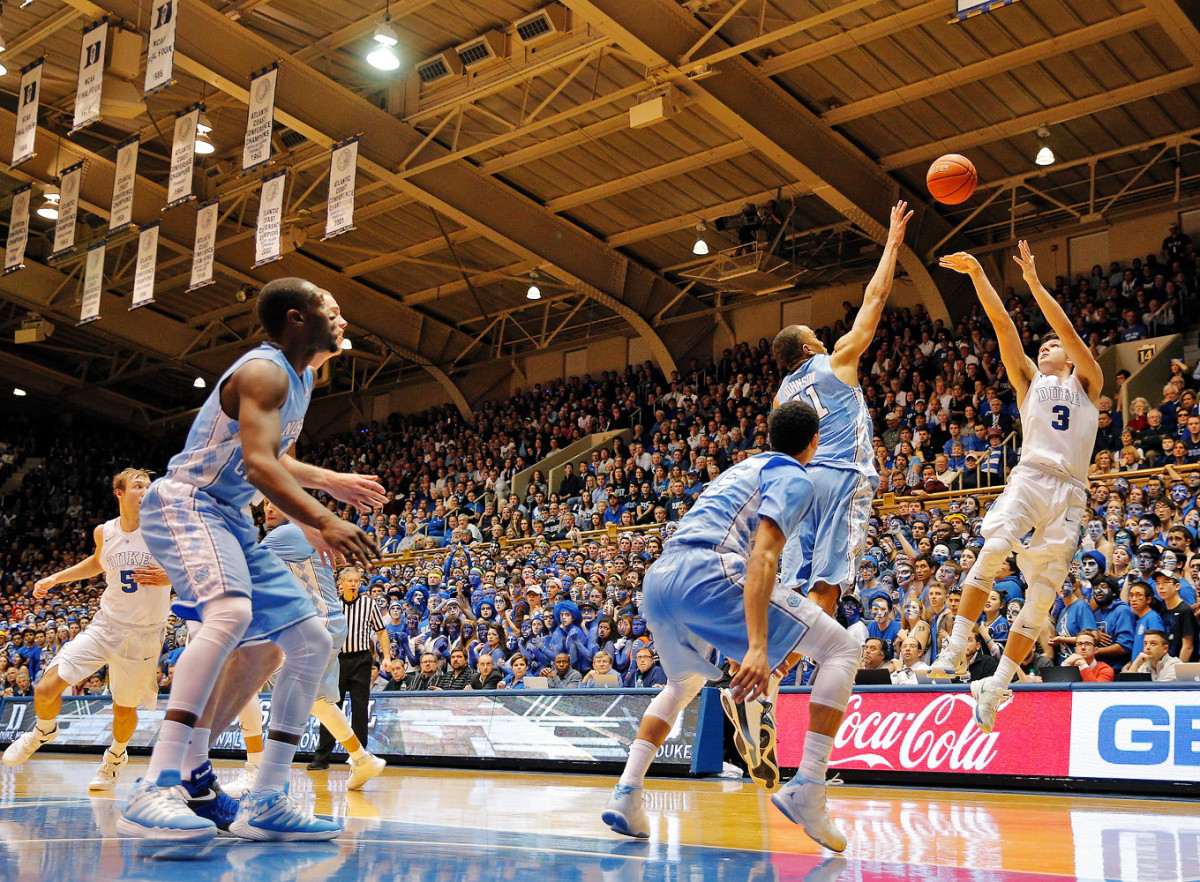
Grayson Jeter of Duke
March 4, 2017
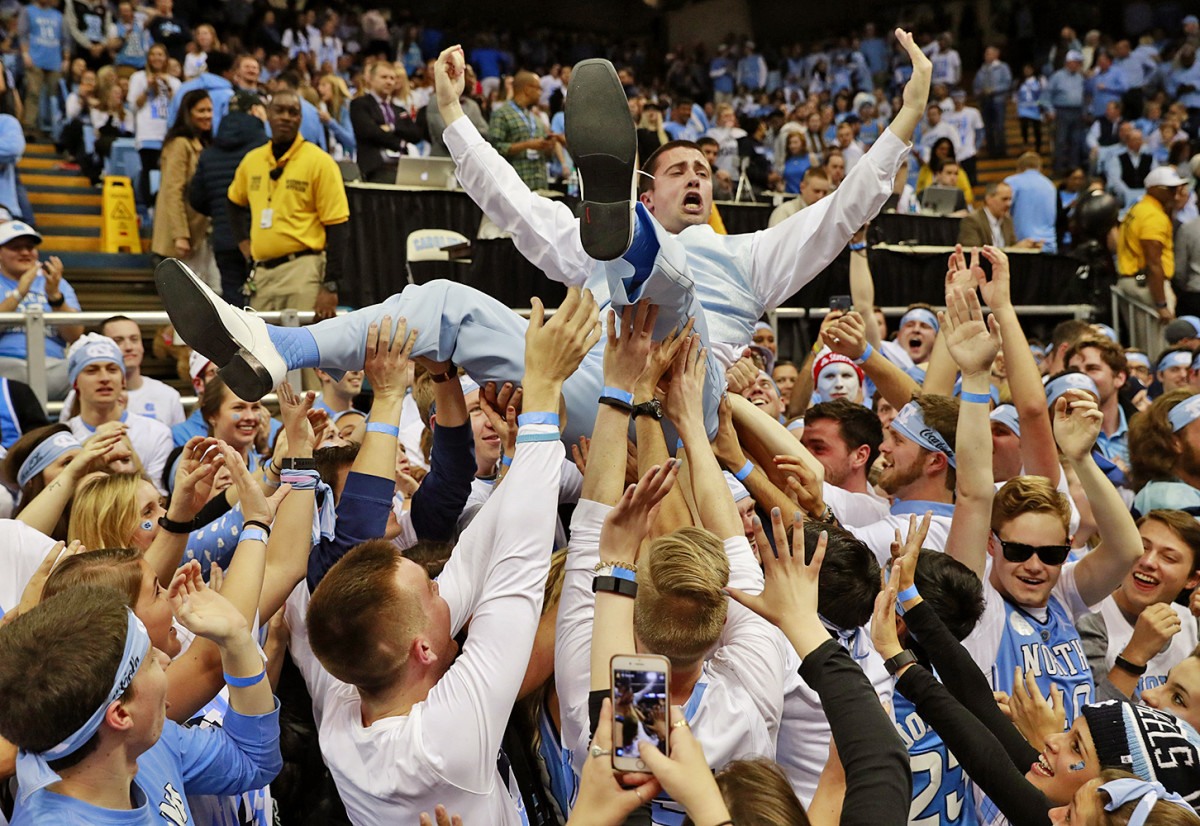
North Carolina celebrates
March 4, 2017
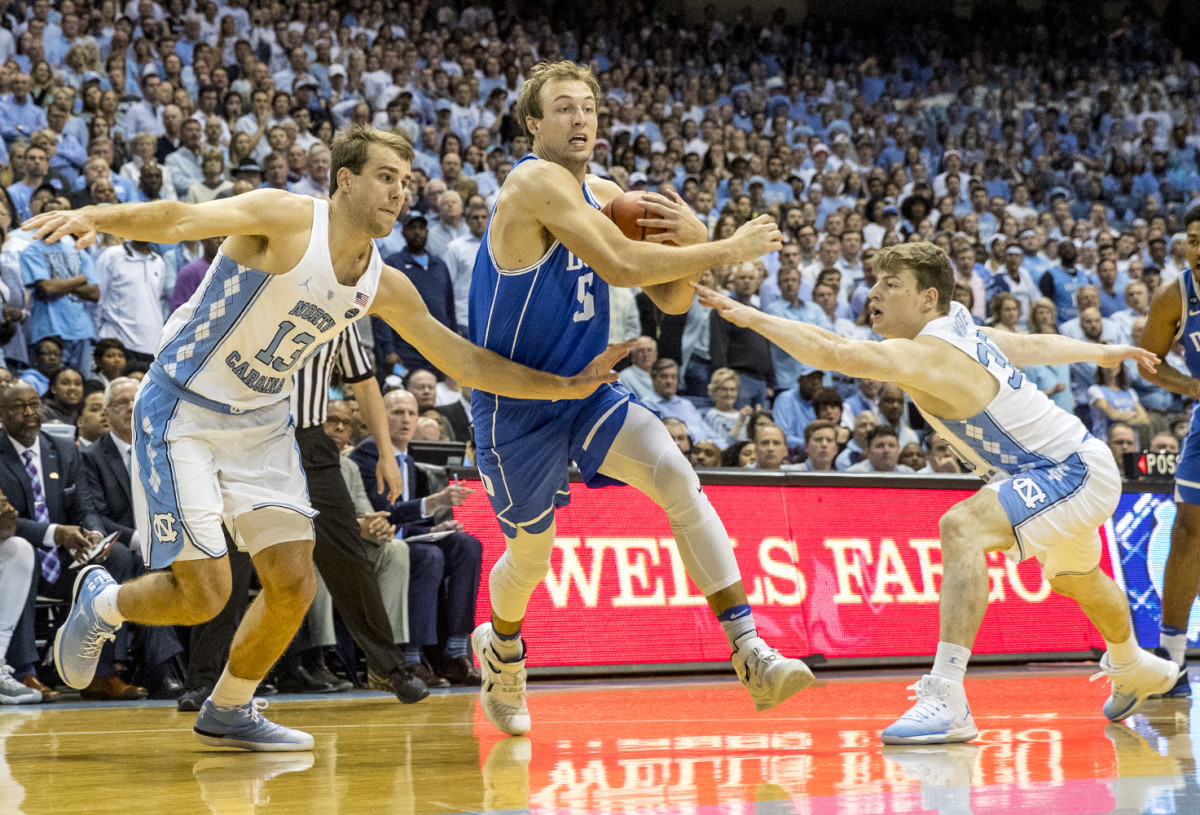
Kanler Coker and Luke Kennard
March 4, 2017
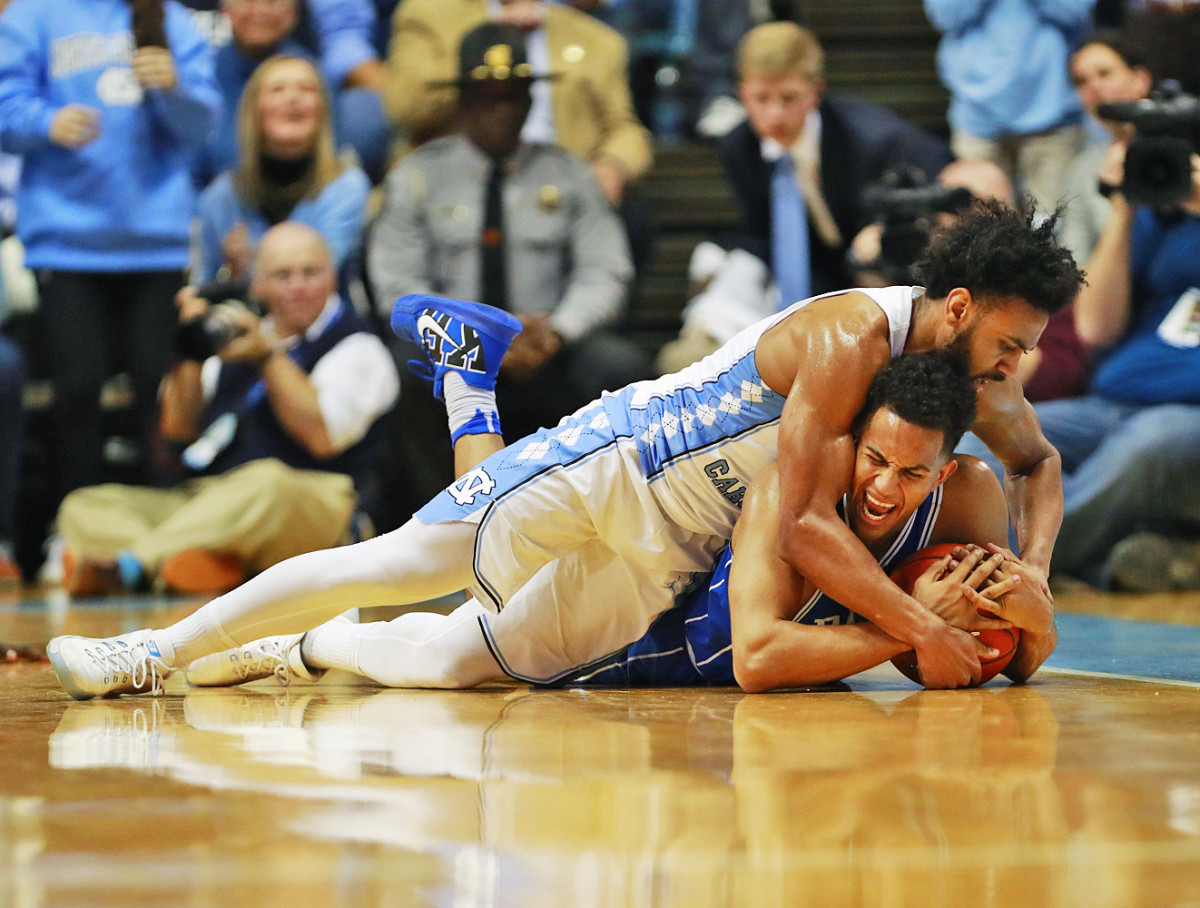
Joel Berry II and Frank Jackson
March 4, 2017
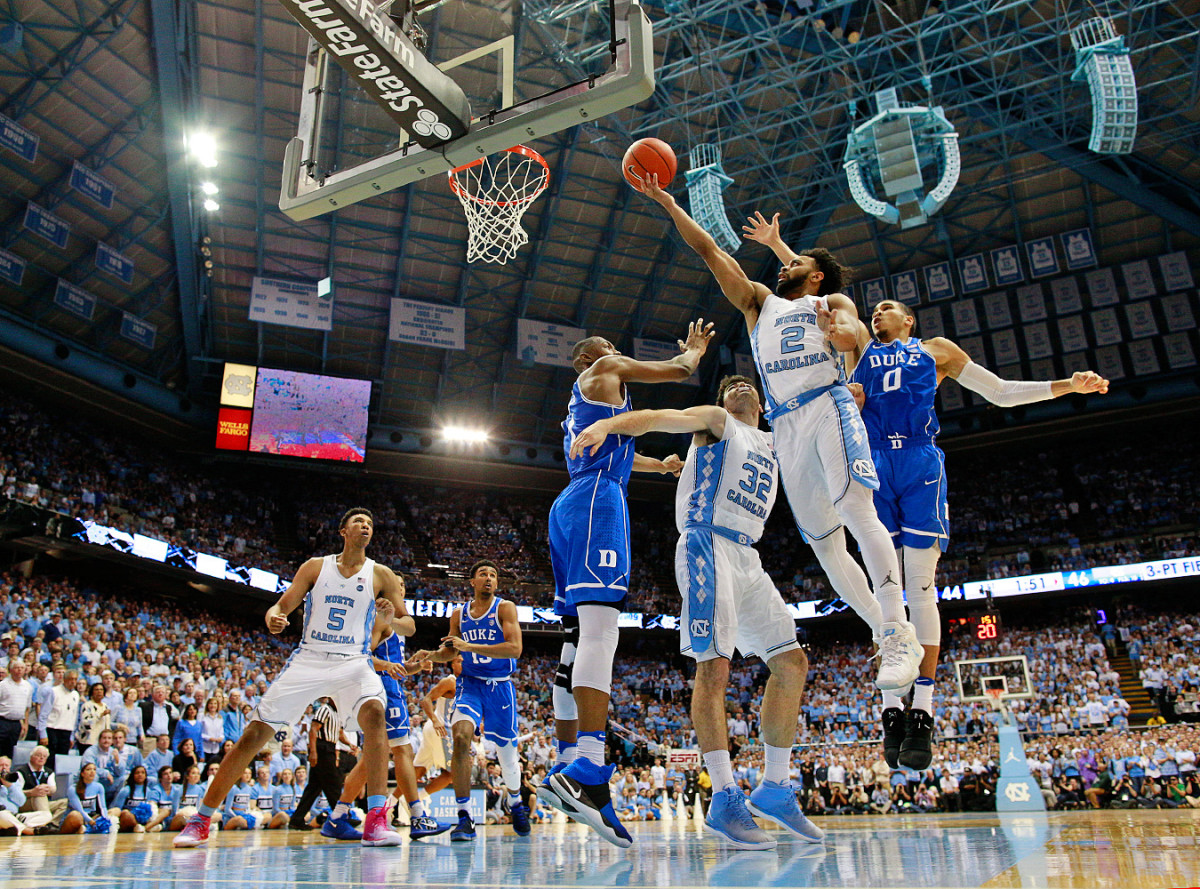
Joel Berry II
March 4, 2017
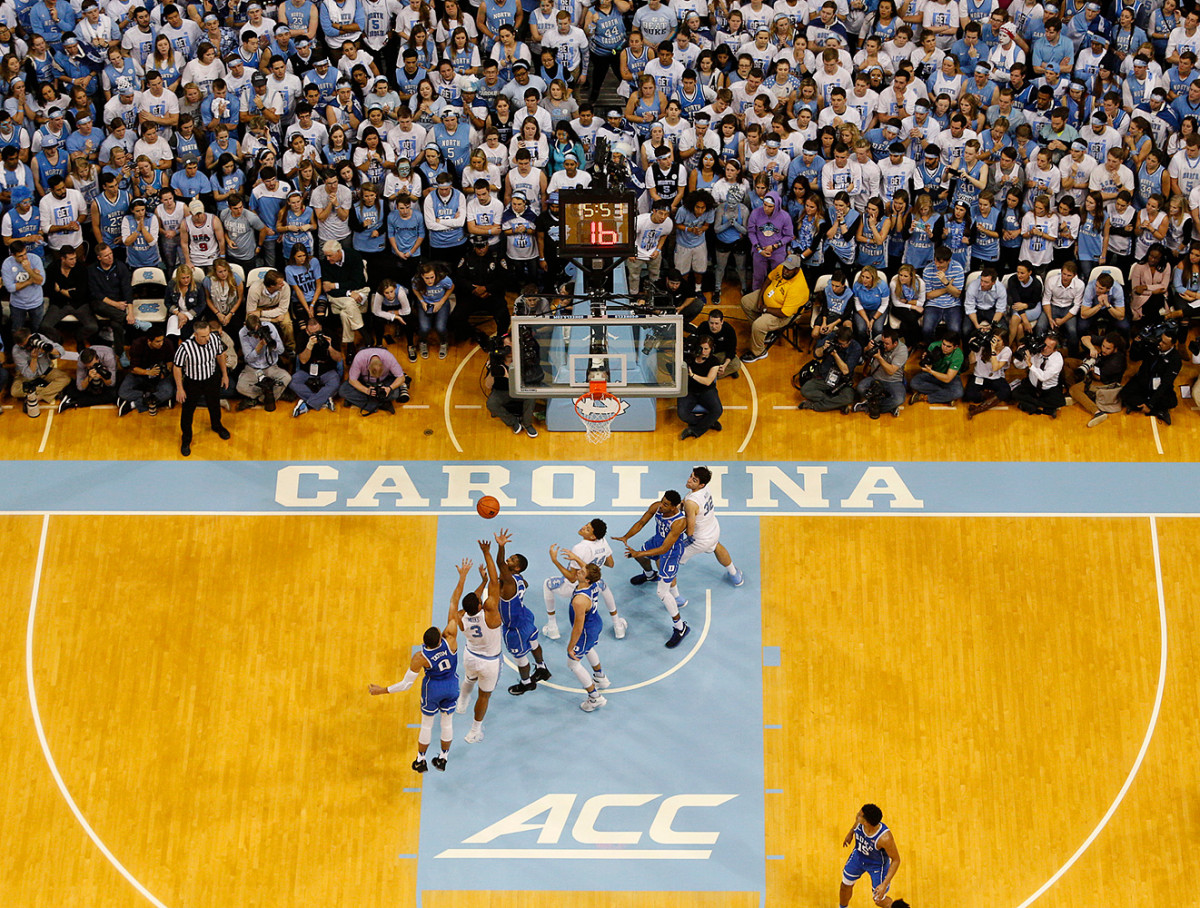
Kennedy Meeks
Dec. 28, 1956 (Dixie Classic)
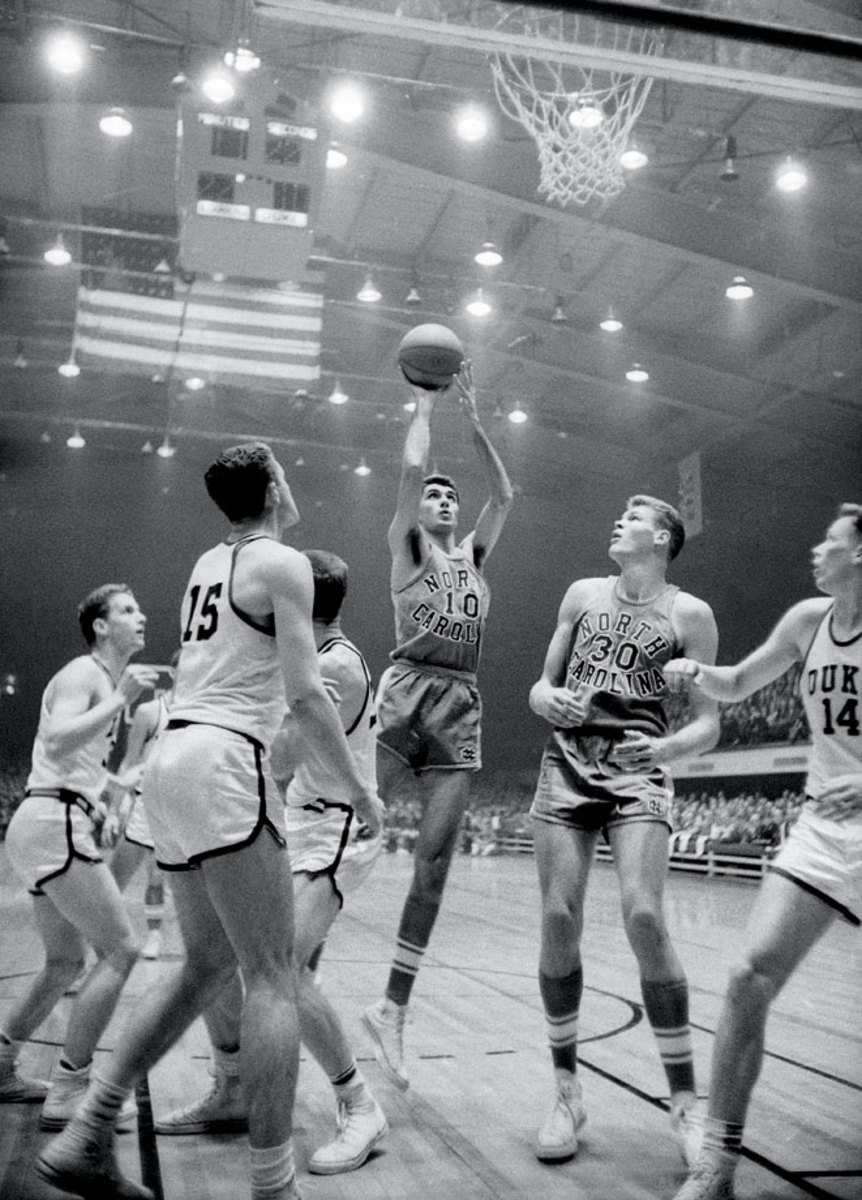
Lennie Rosenbluth
Dec. 28, 1956 (Dixie Classic)
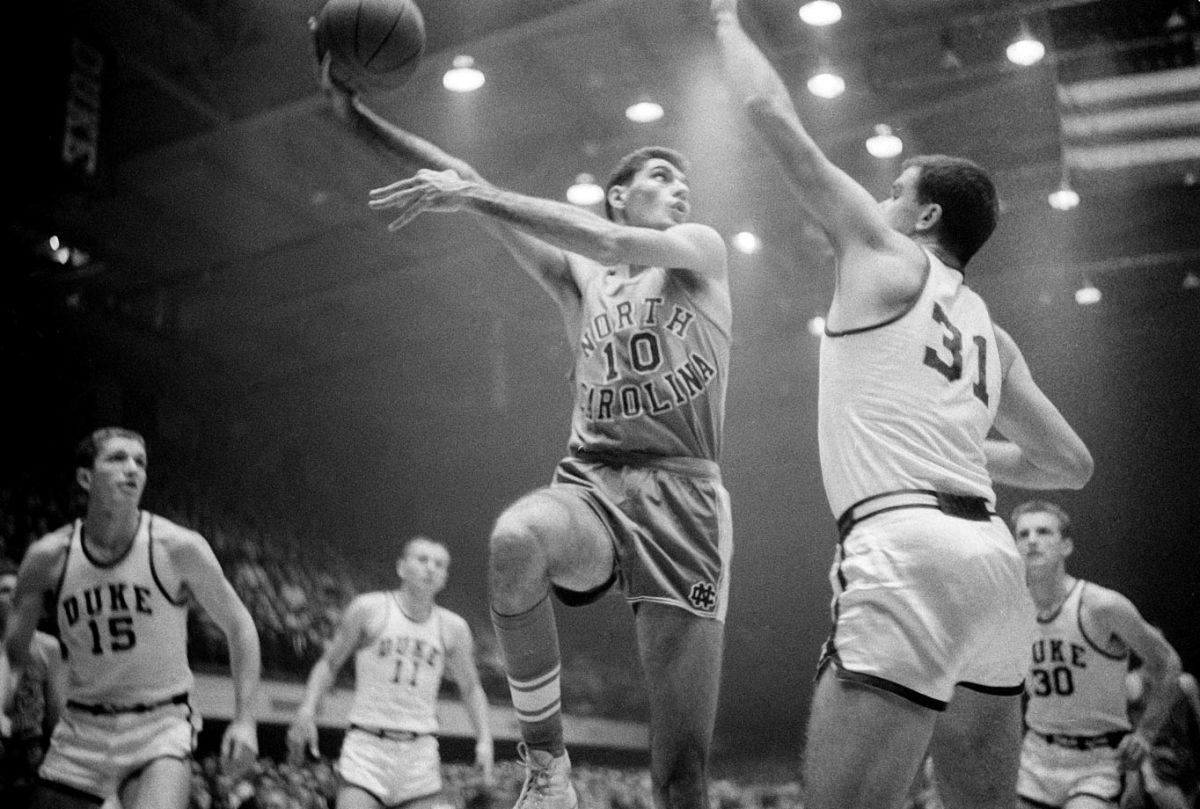
Lennie Rosenbuth
Dec. 15, 1972 (Big Four Tournament)
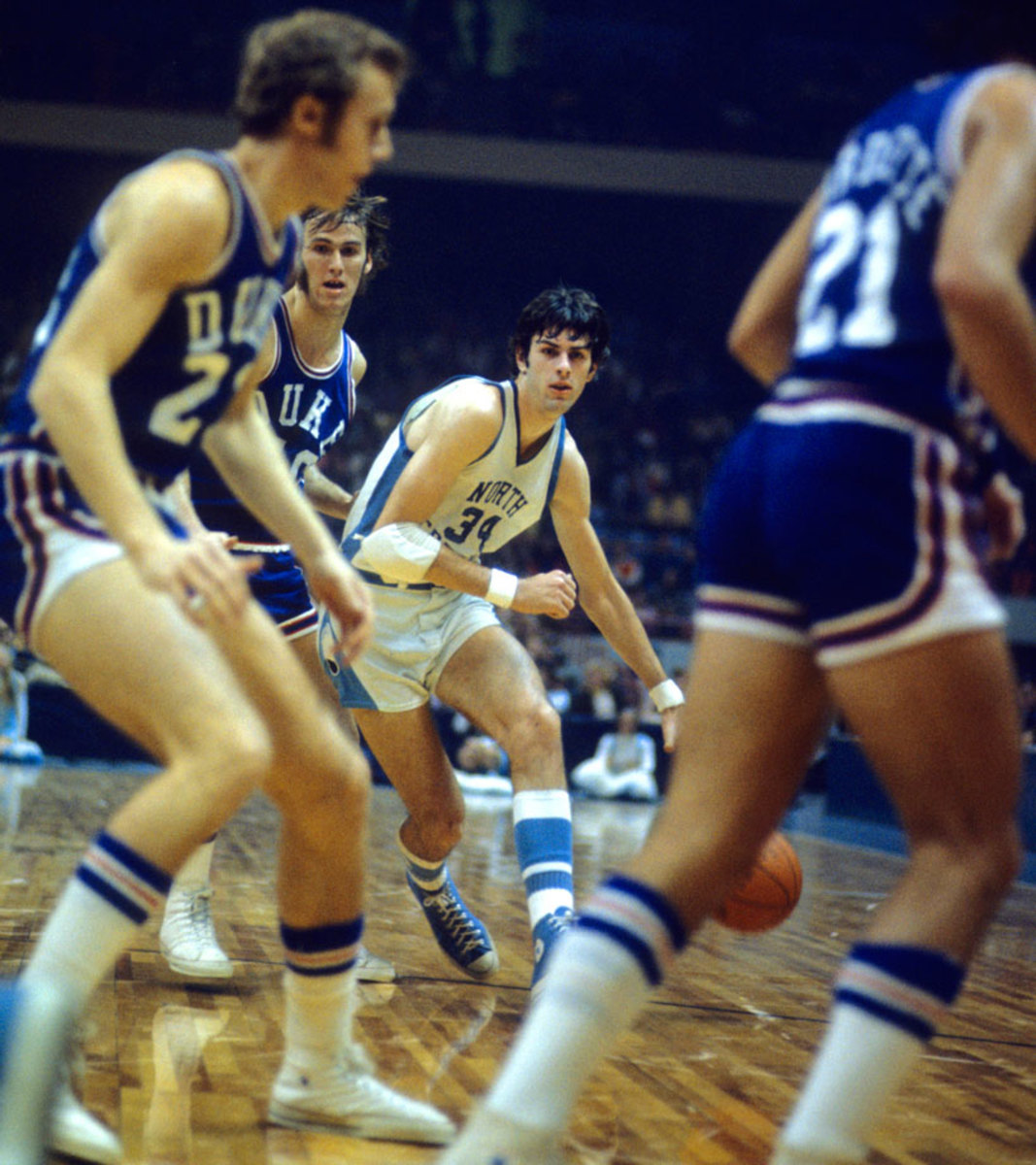
Bobby Jones
March 2, 1979 (ACC Tournament)
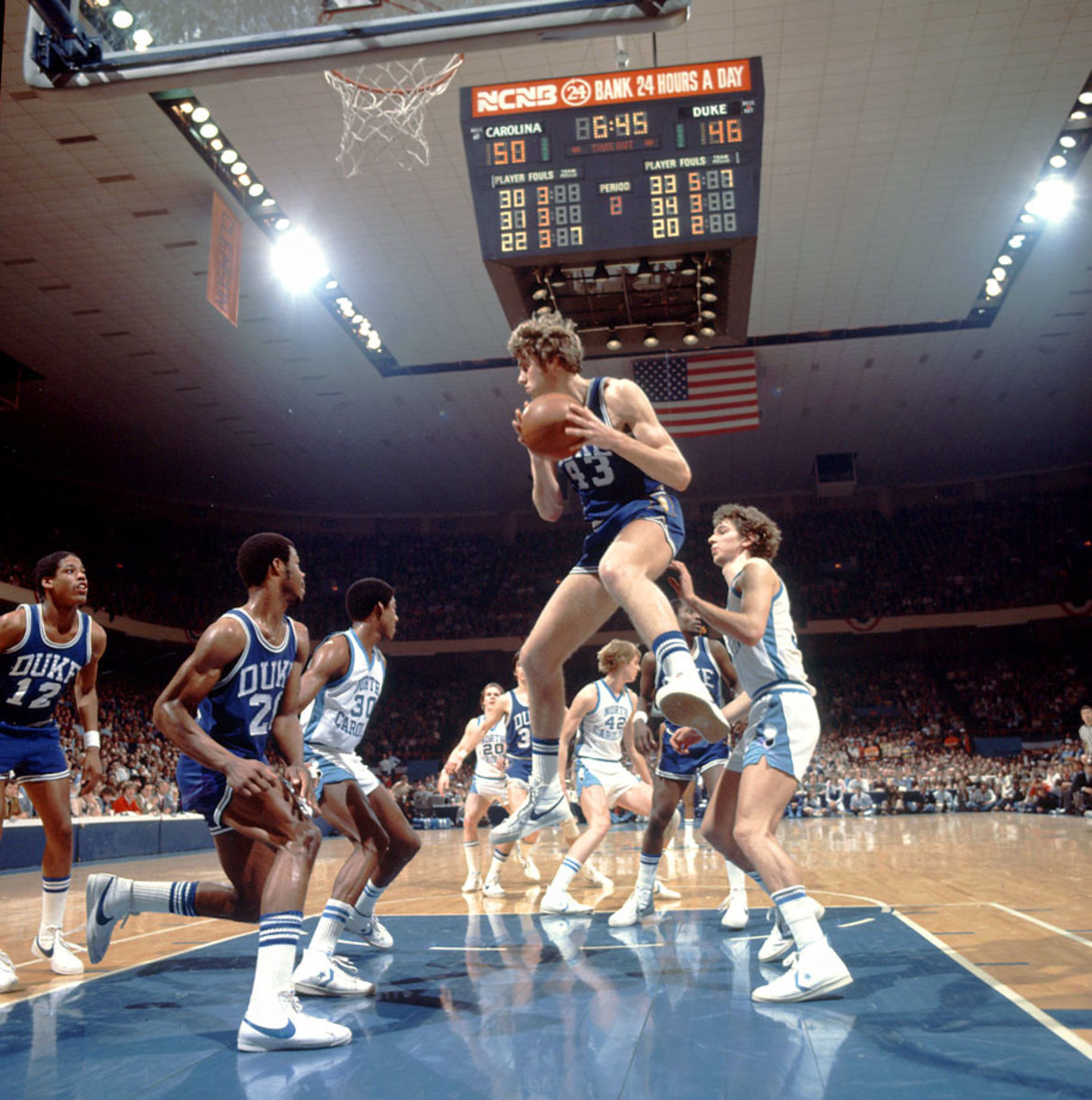
Mike Gminski
March 10, 1984 (ACC Tournament)
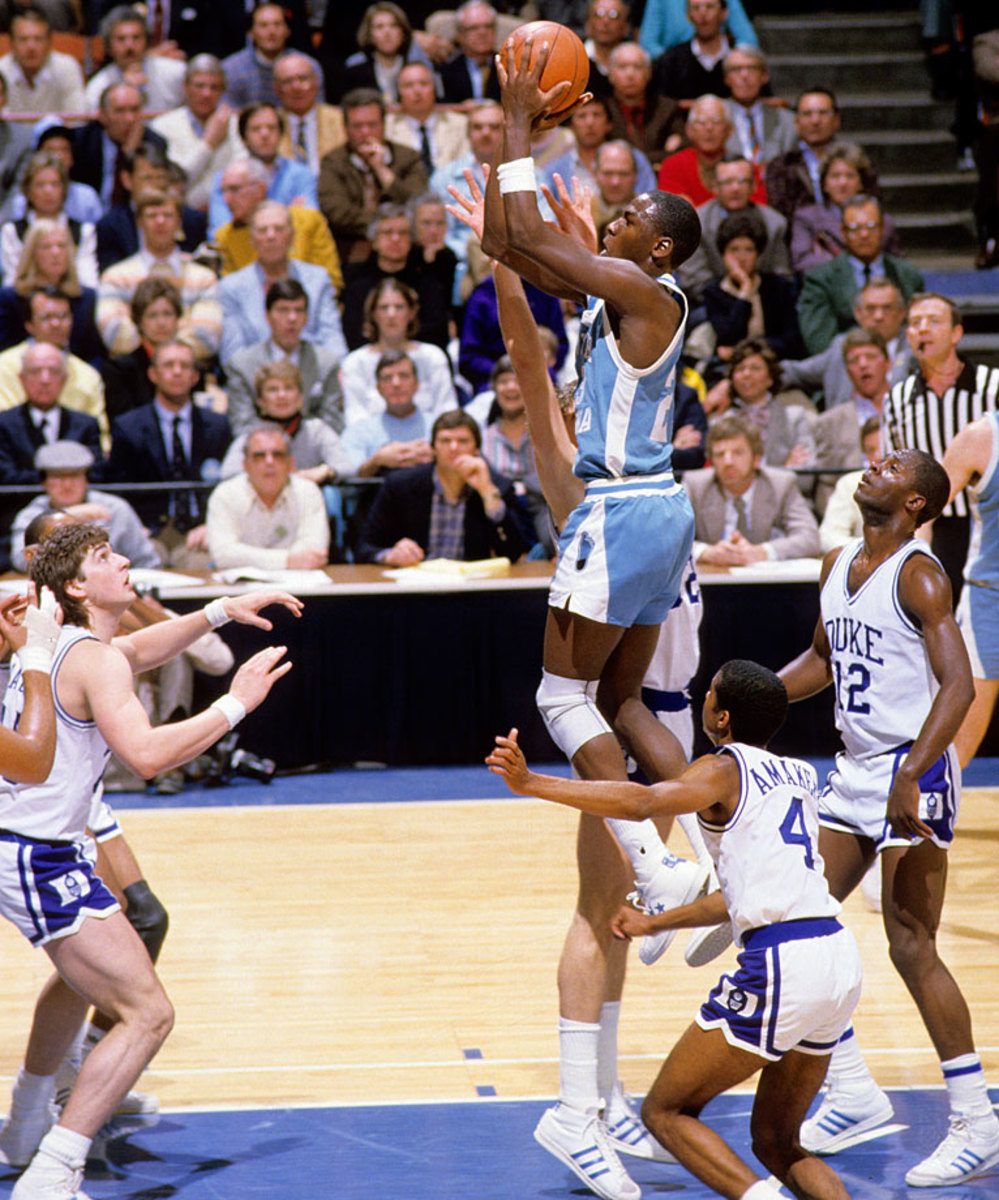
Michael Jordan
March 10, 1984 (ACC Tournament)
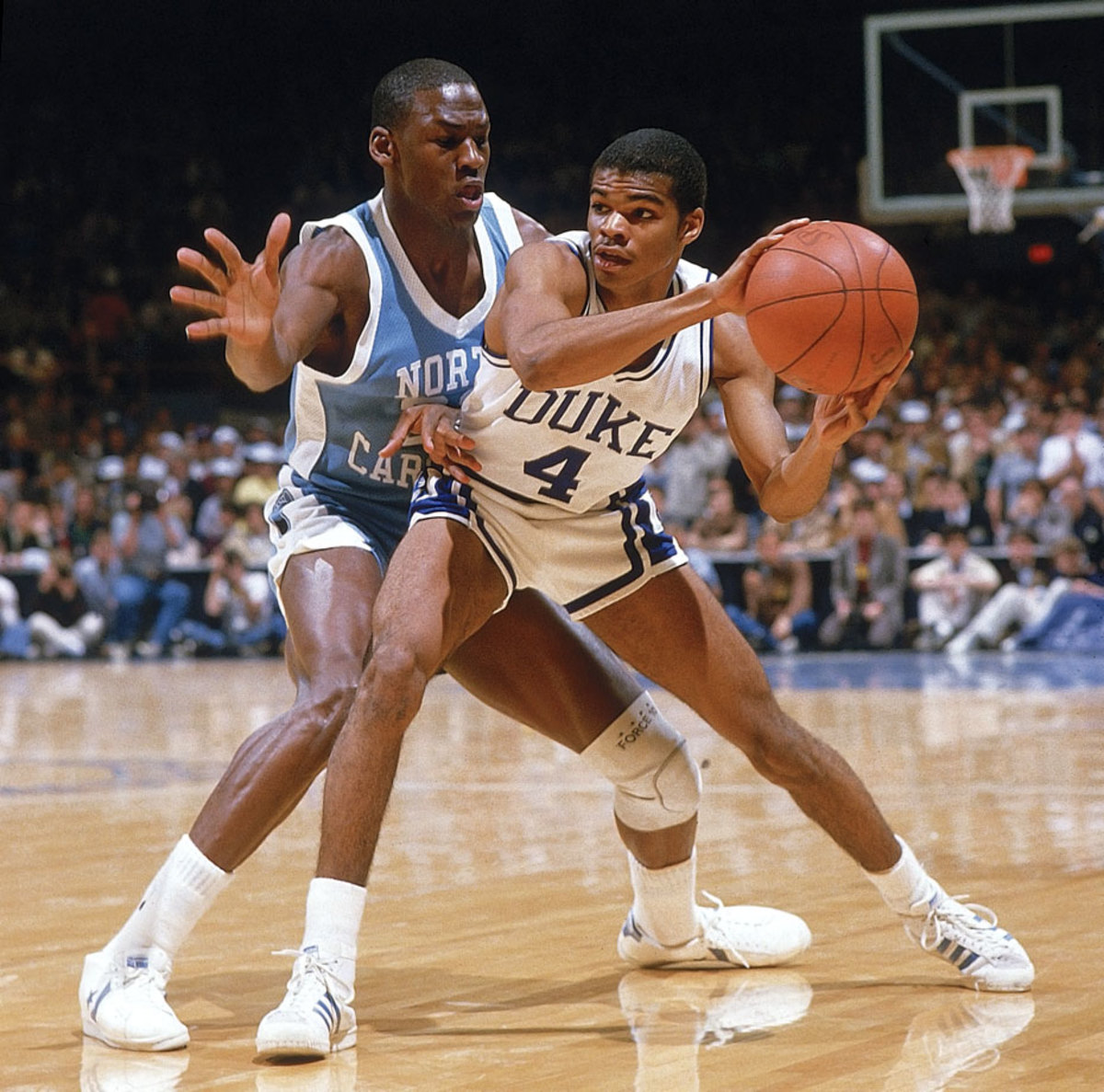
Michael Jordan and Tommy Amaker
March 10, 1984 (ACC Tournament)
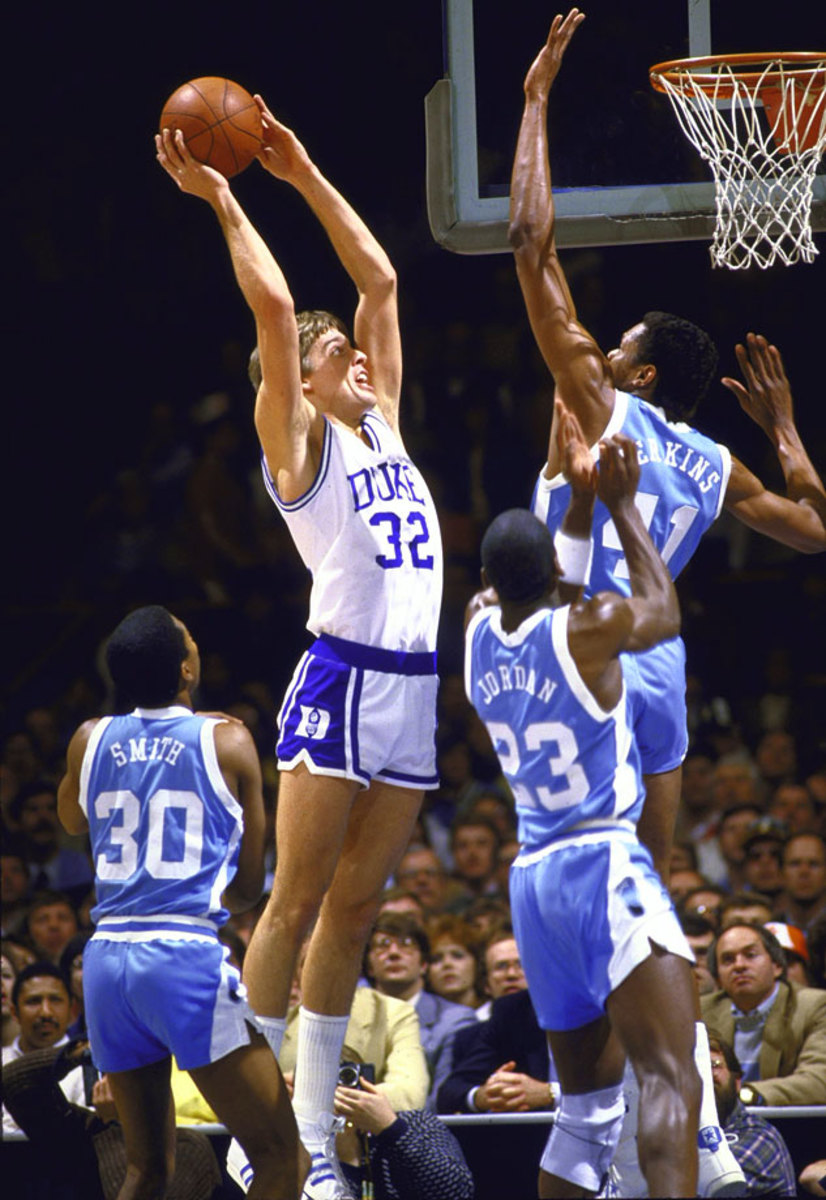
Mark Alarie and Sam Perkins
March 12, 1989 (ACC Tournament)
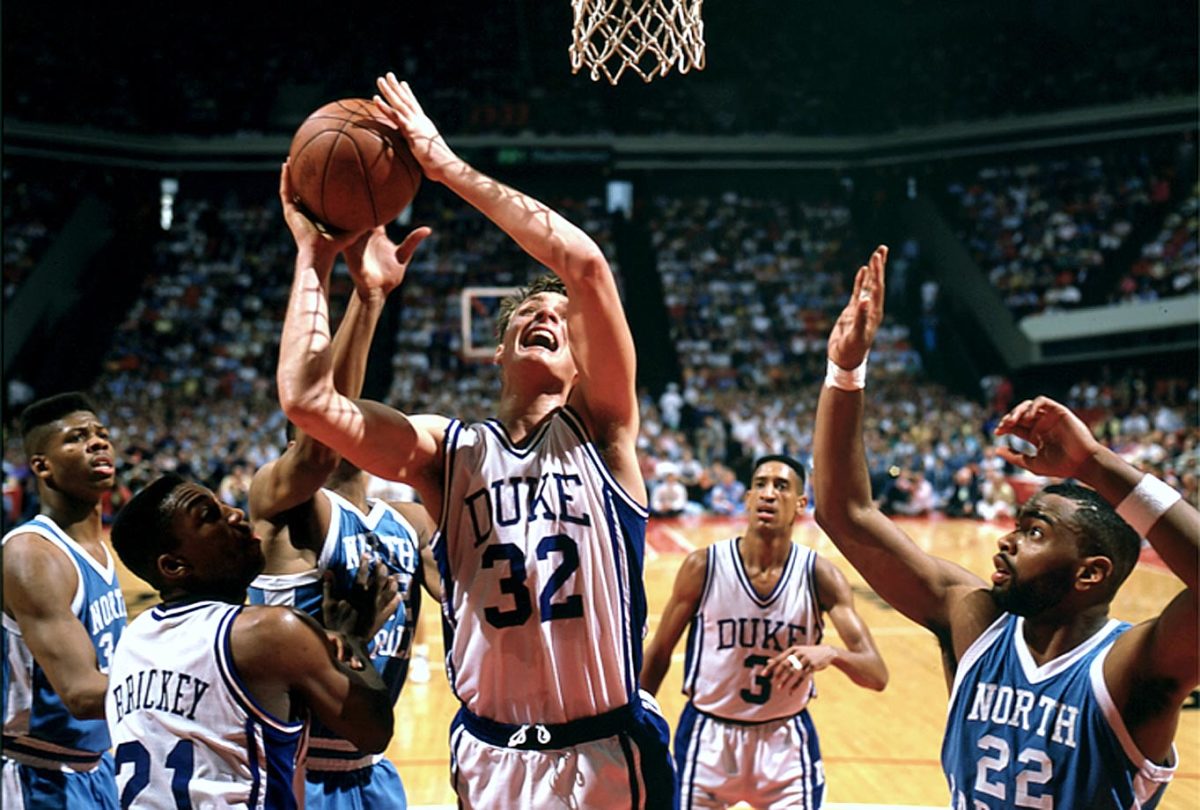
Christian Laettner
March 12, 1989 (ACC Tournament)
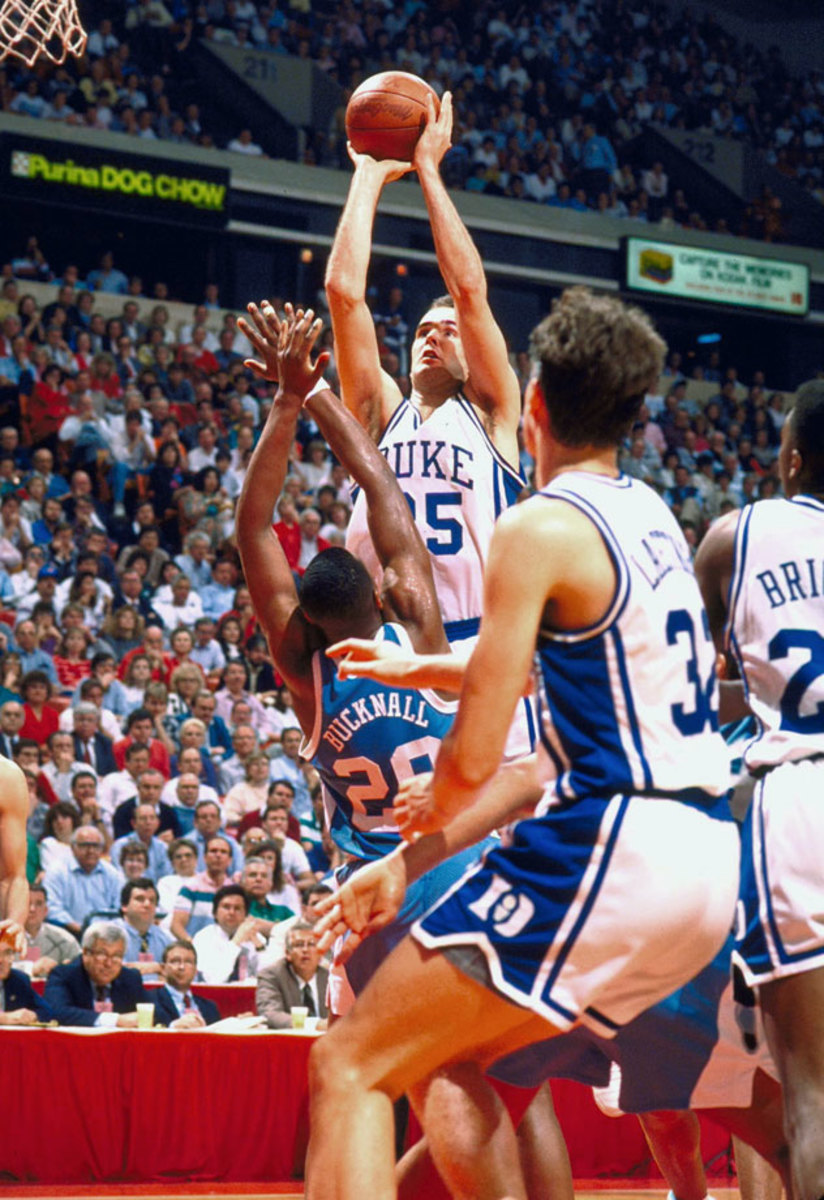
Danny Ferry
March 12, 1989 (ACC Tournament)
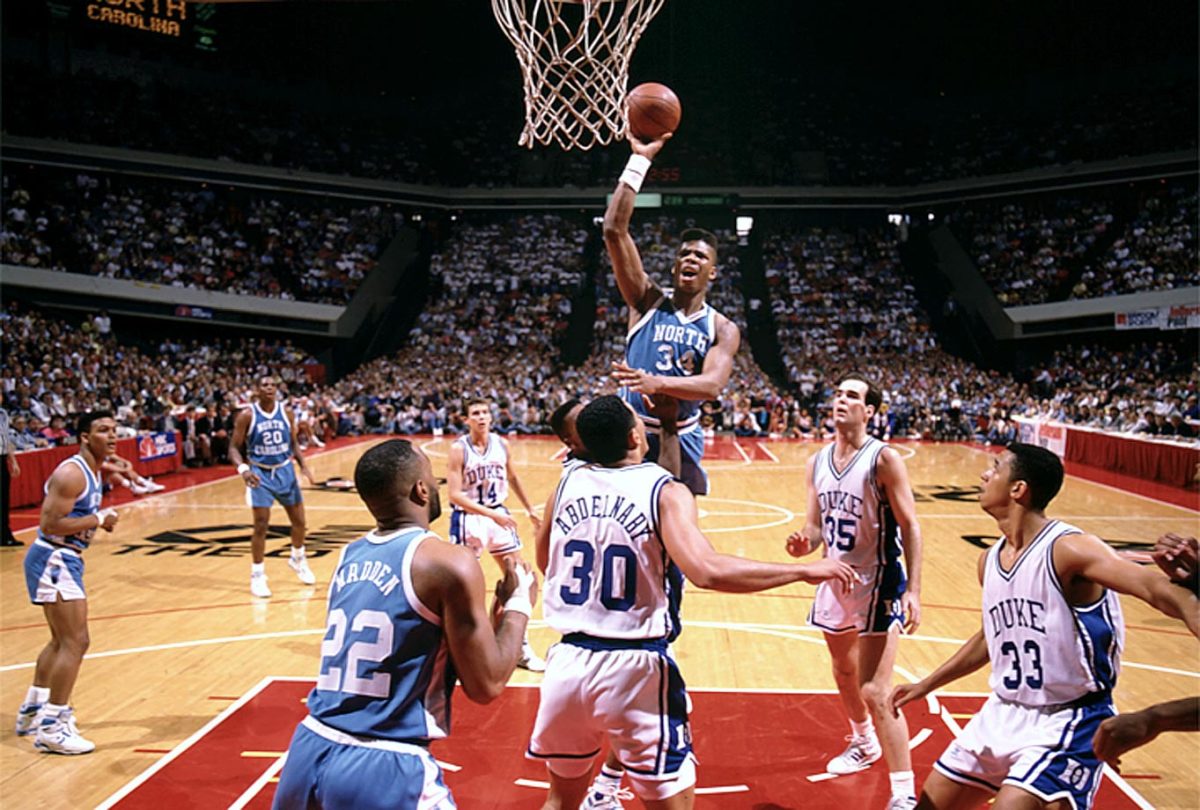
J.R. Reid
March 15, 1992 (ACC Tournament)
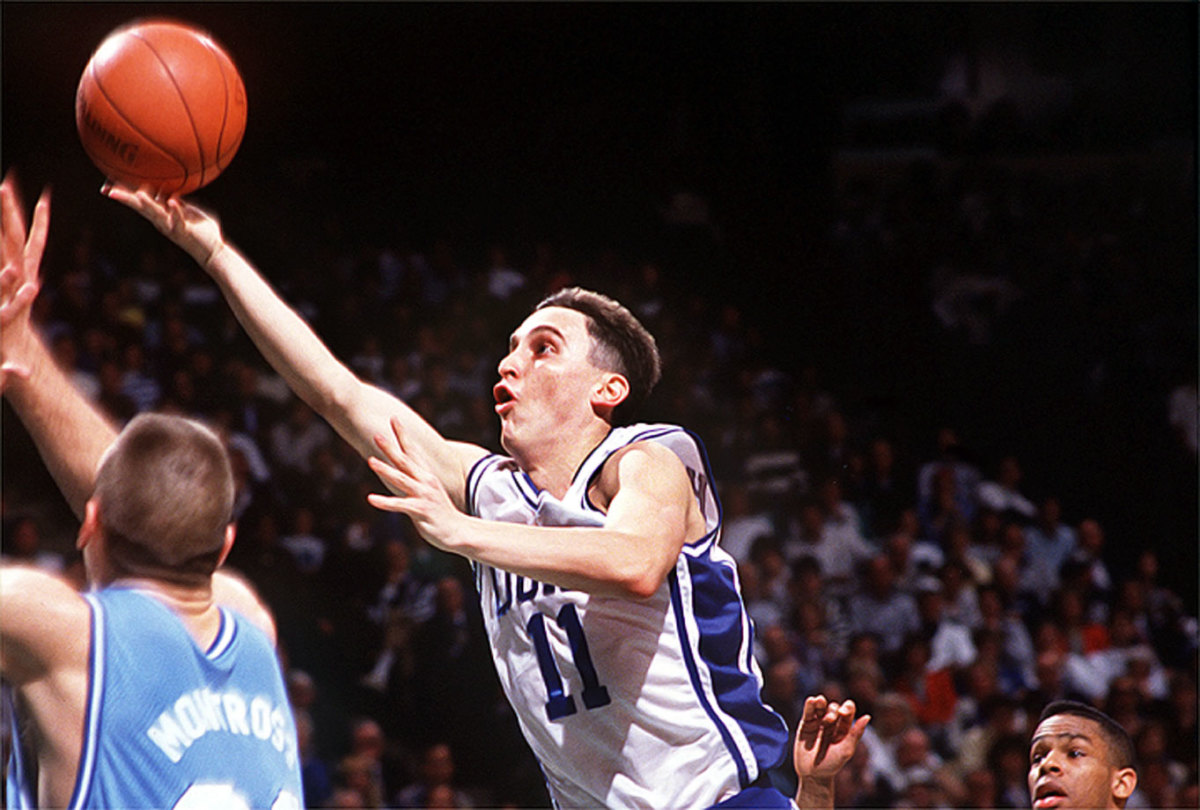
Bobby Hurley
Feb. 2, 1994
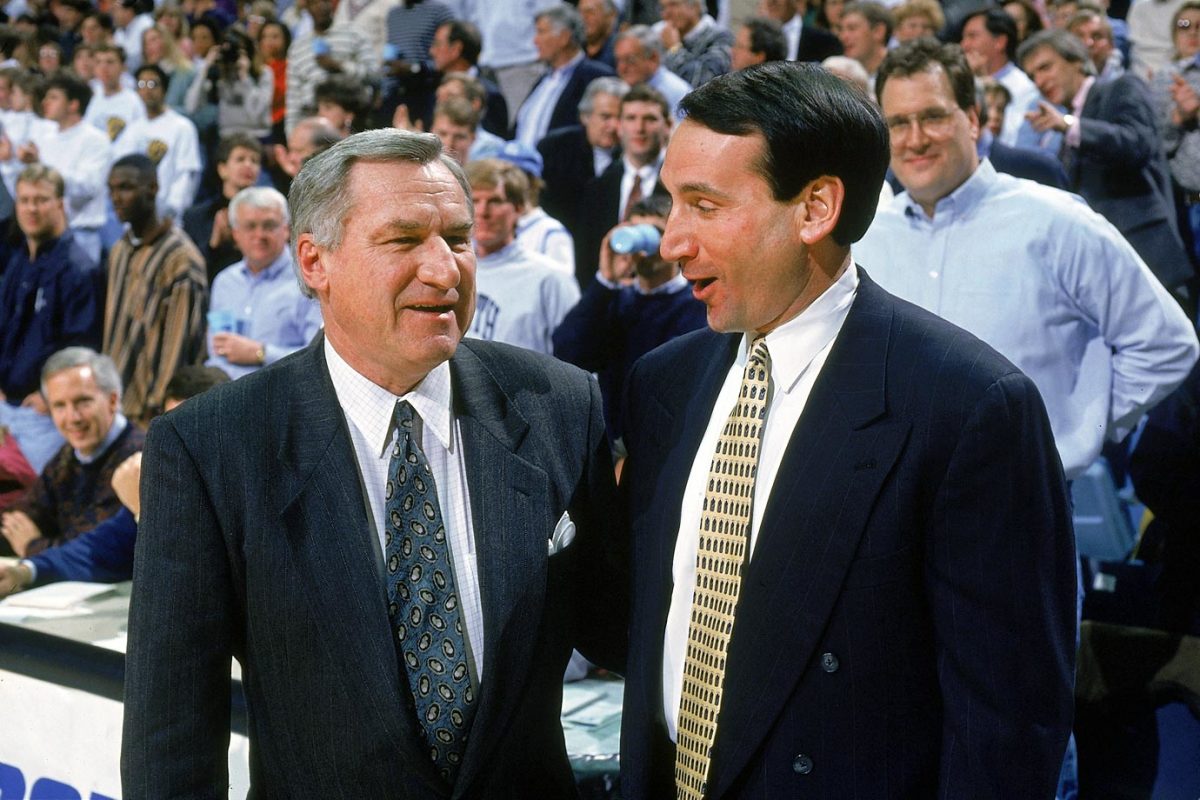
Dean Smith and Mike Krzyzewski
March 5, 1994
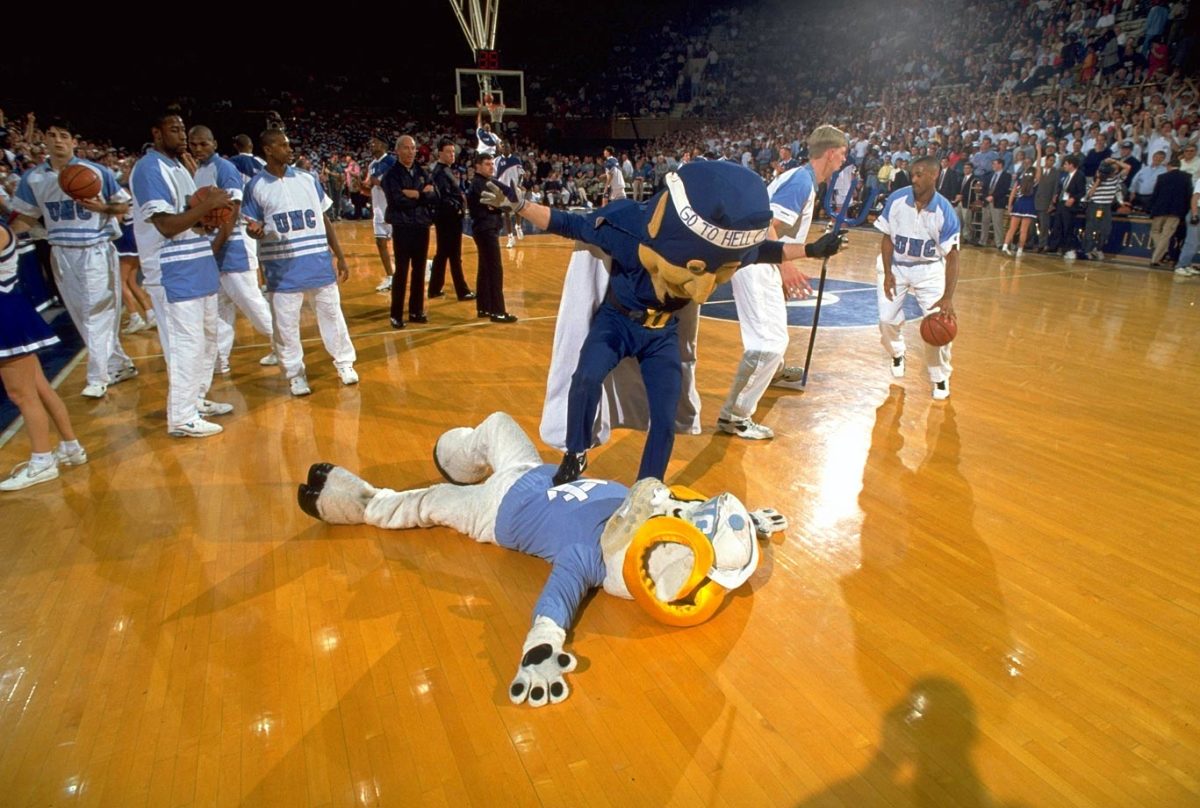
The Blue Devil and Ramses
March 5, 1994
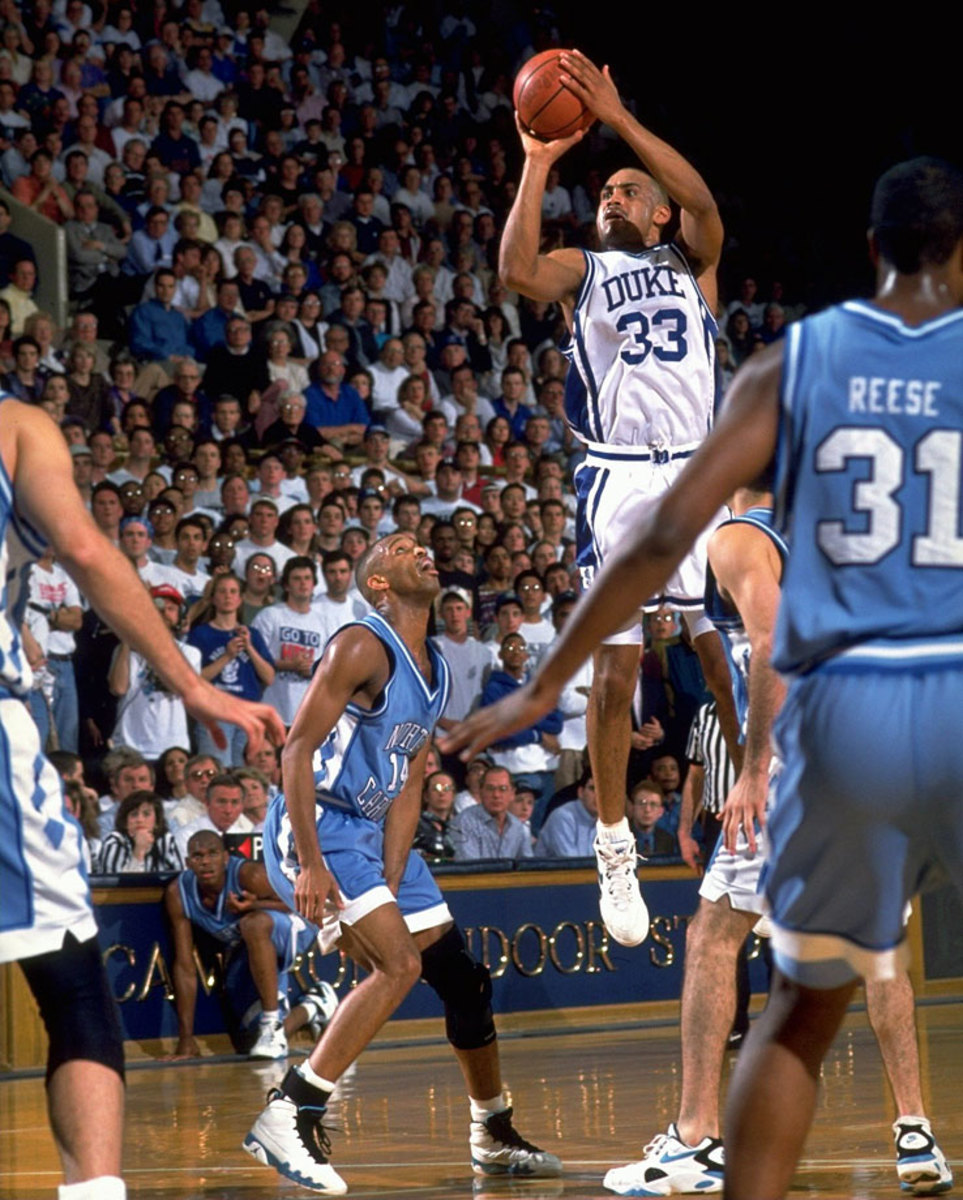
Grant Hill
Feb. 2, 1995
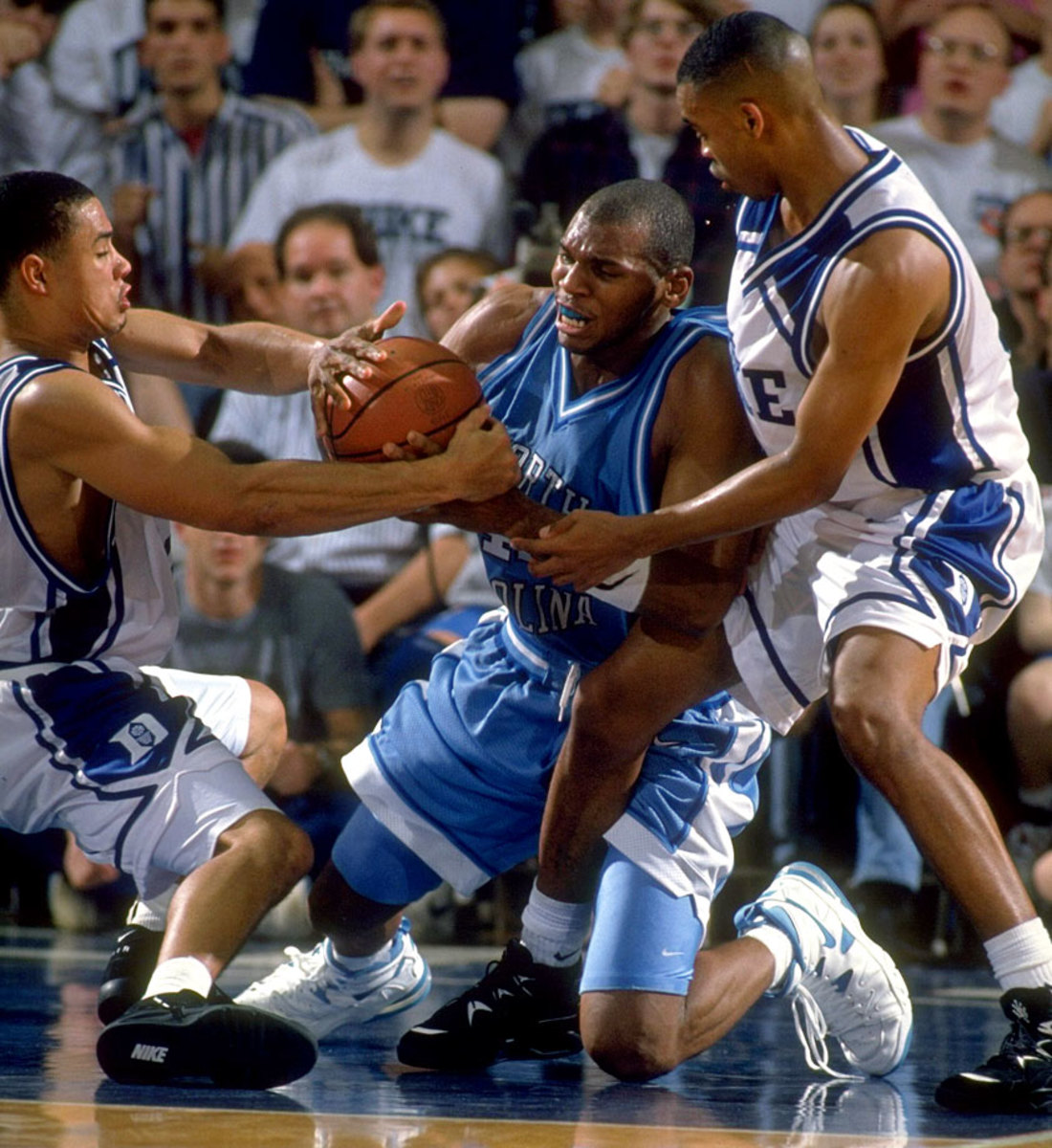
Jerry Stackhouse
Feb. 2, 1995
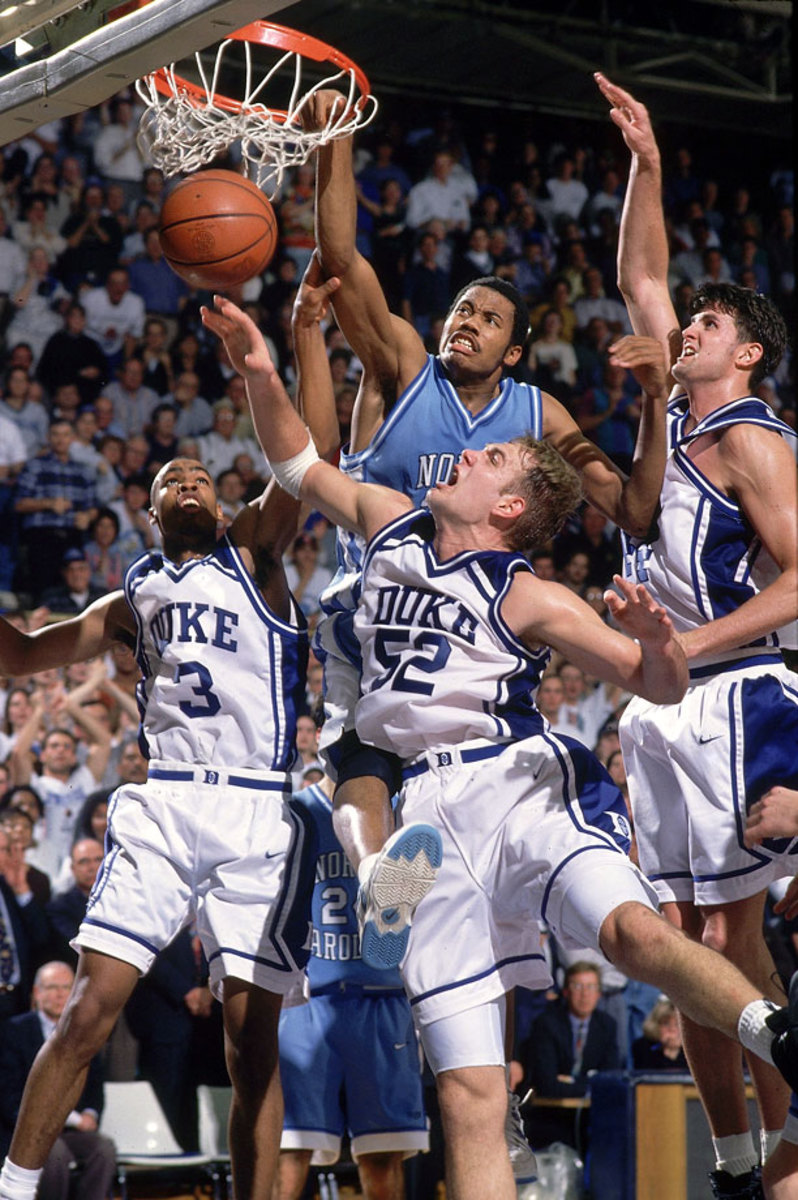
Rasheed Wallace
Feb. 2, 1998
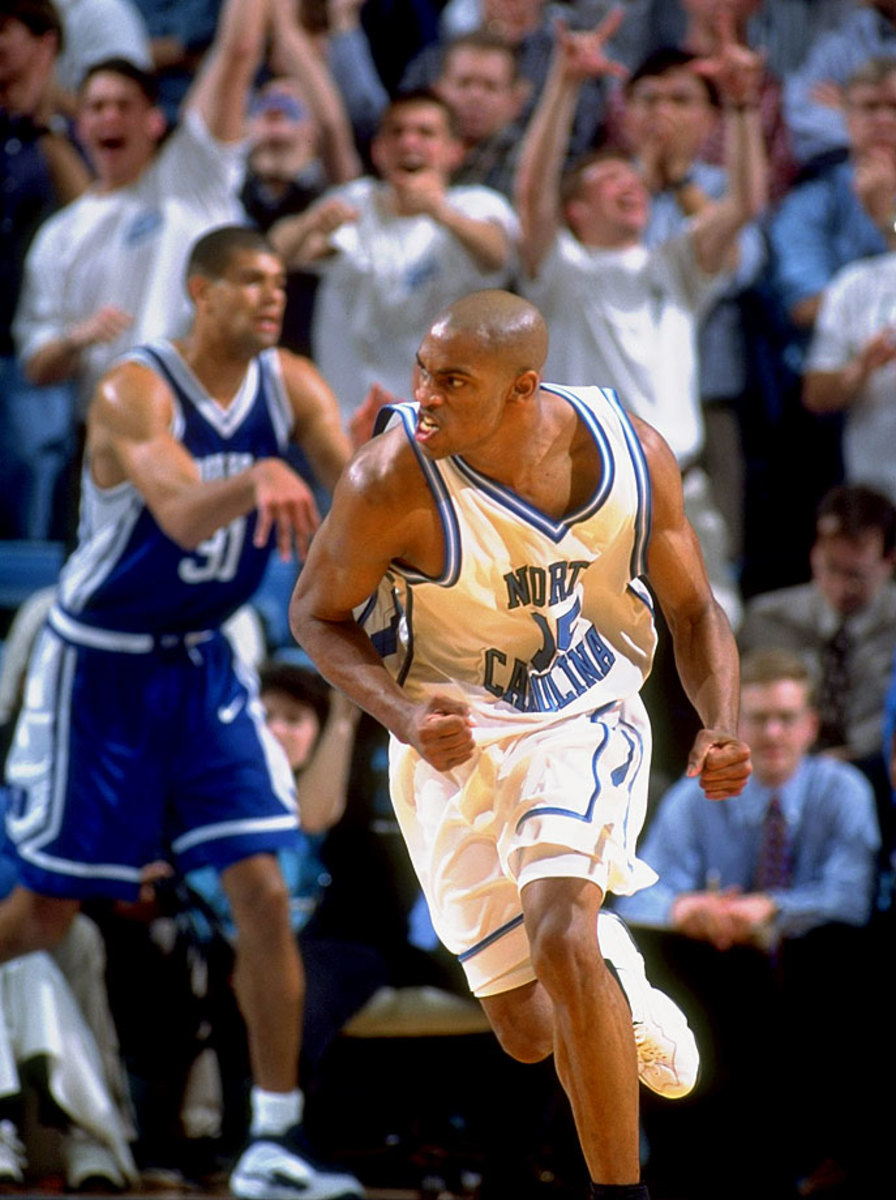
Vince Carter
Feb. 27, 1998
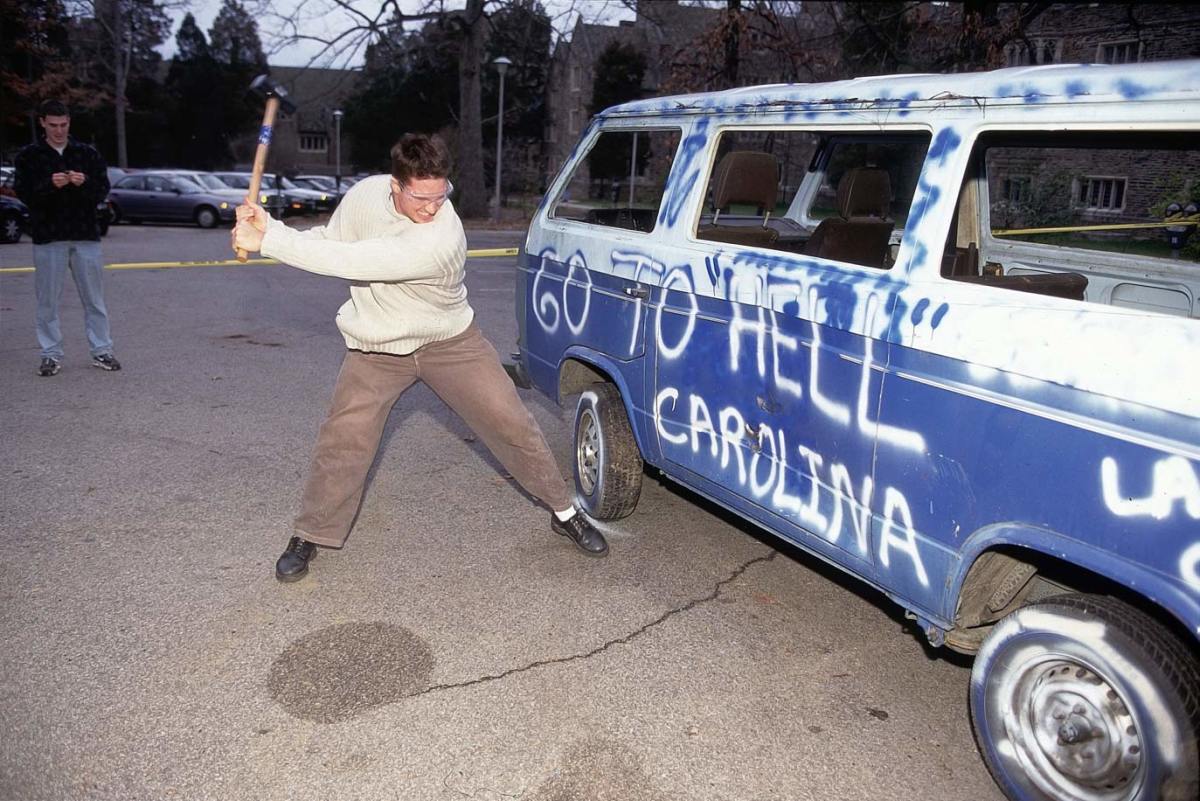
Duke fan
Feb. 28, 1998
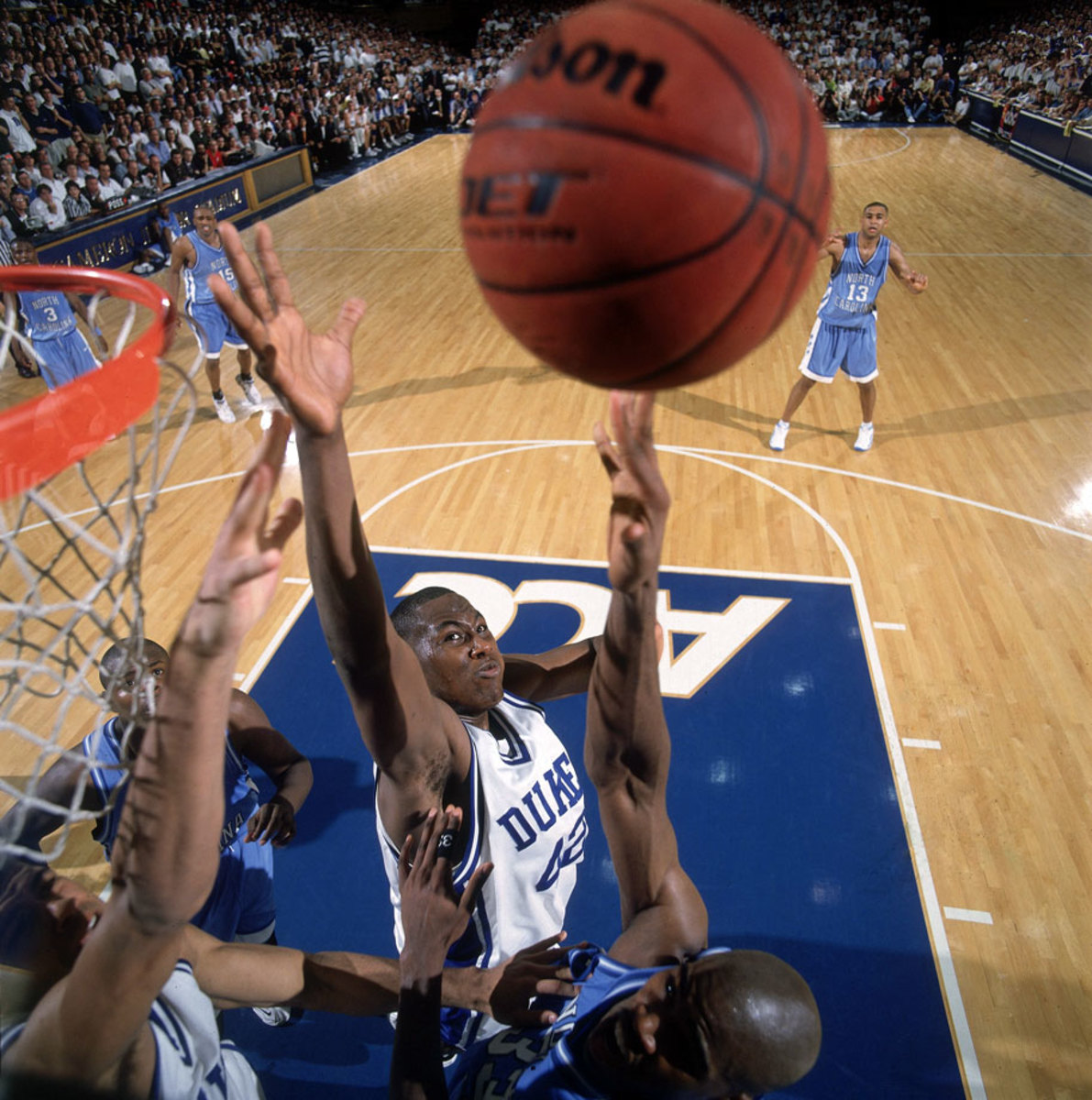
Elton Brand and Antawn Jamison
Feb. 27, 1999
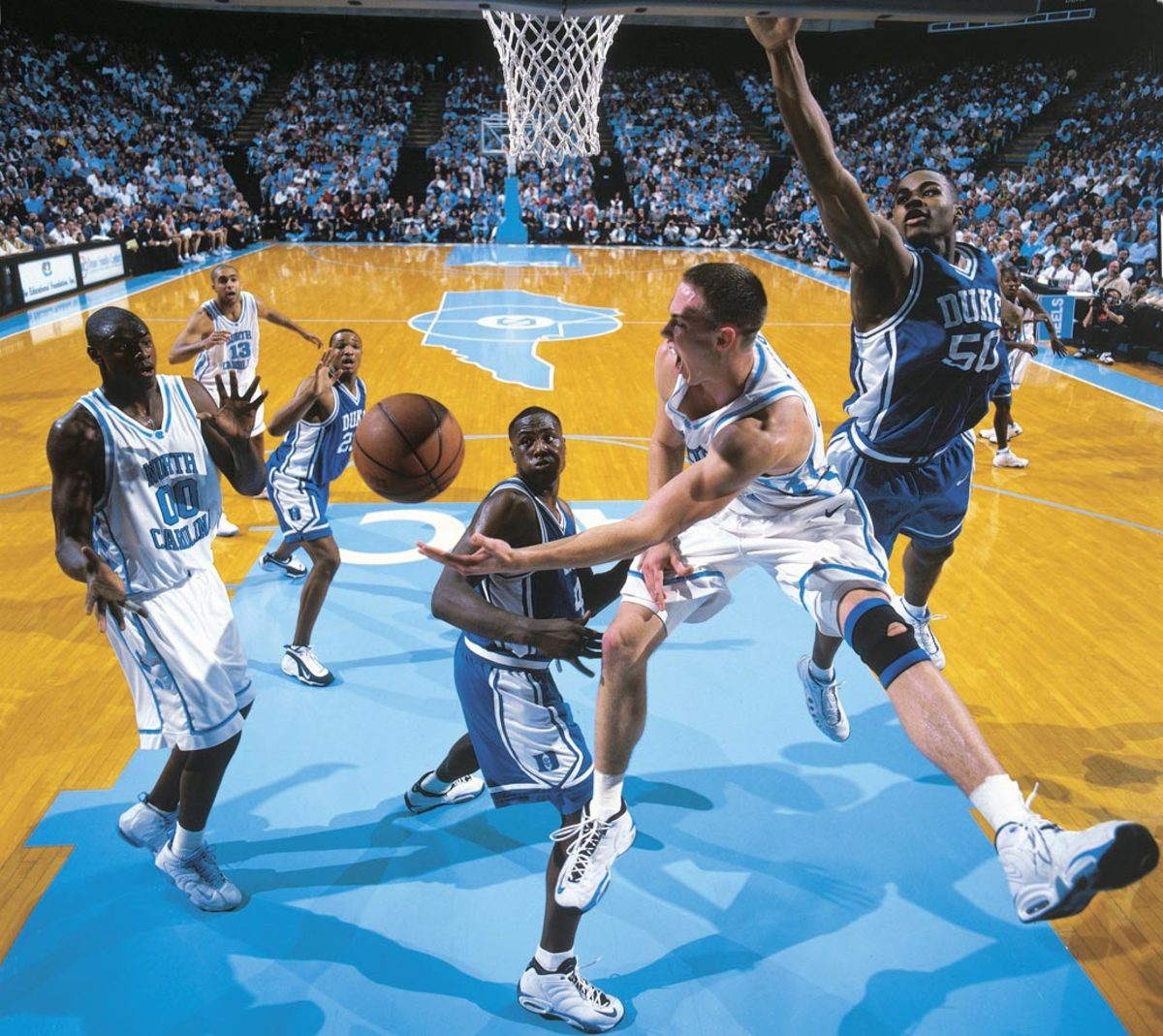
Kris Lang, Brendan Haywood (00), Elton Brand (42) and Corey Maggette (50)
Feb. 1, 2001
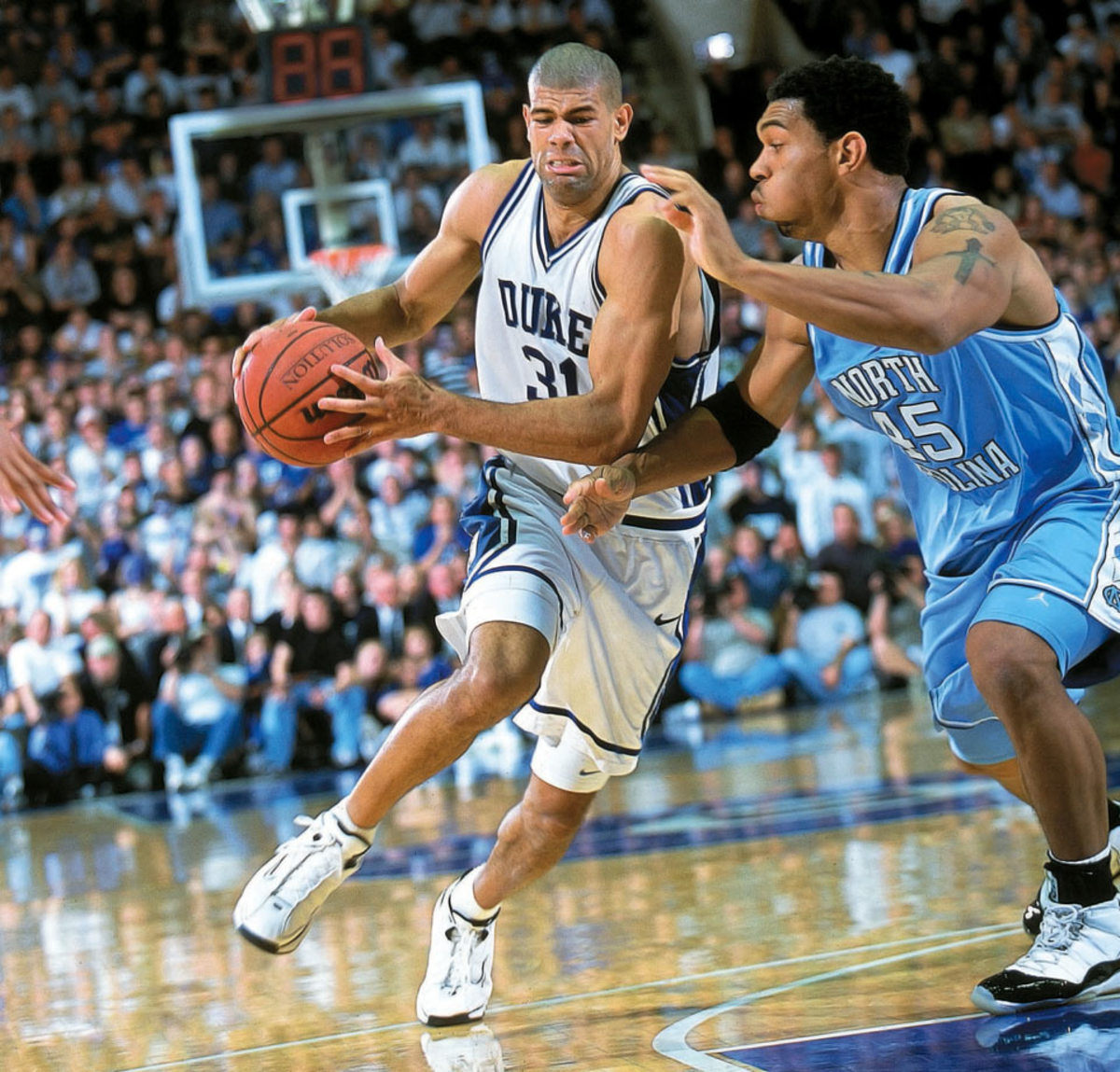
Shane Battier and Julius Peppers
Feb. 1, 2001
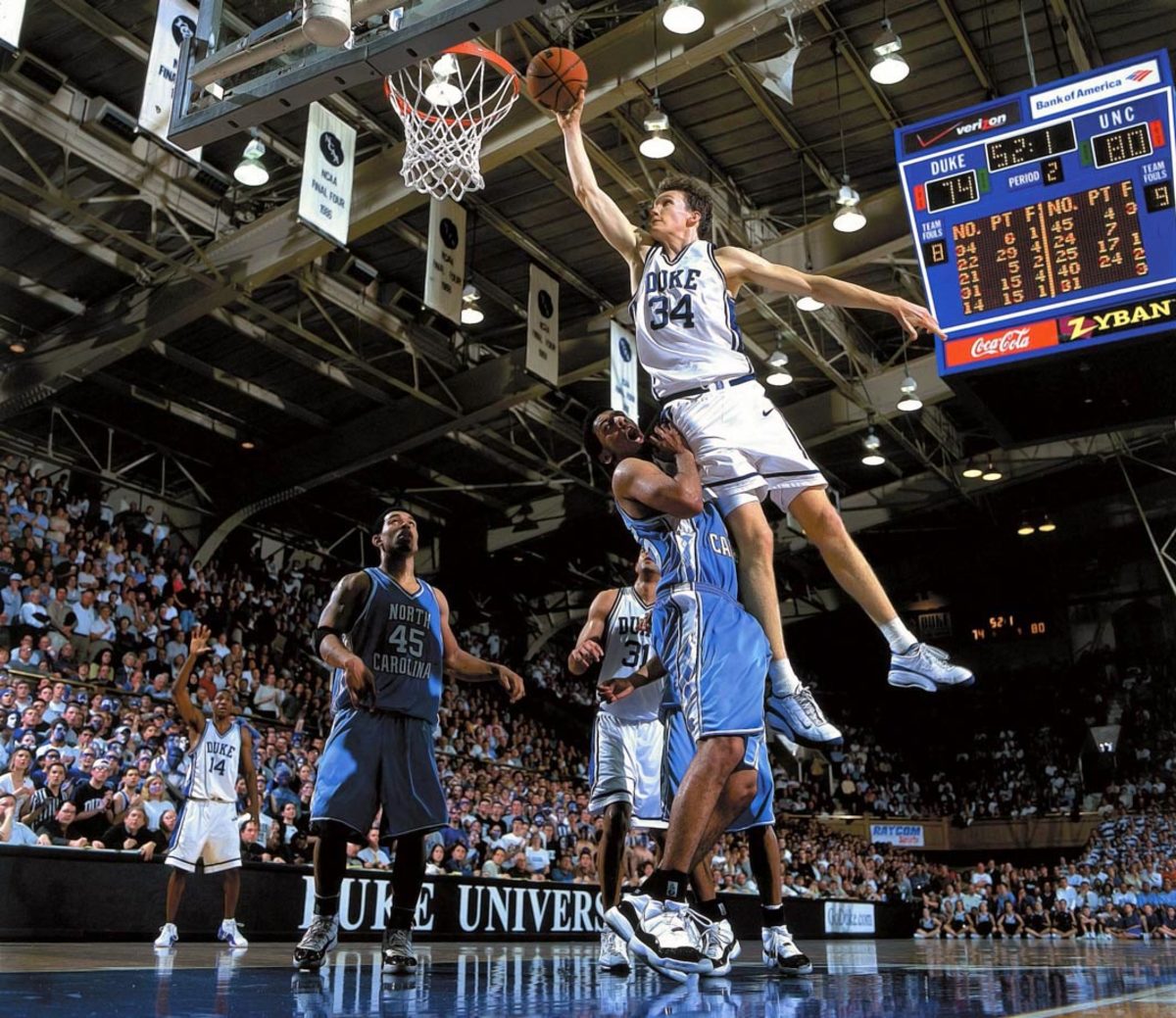
Mike Dunleavy Jr.
March 4, 2001
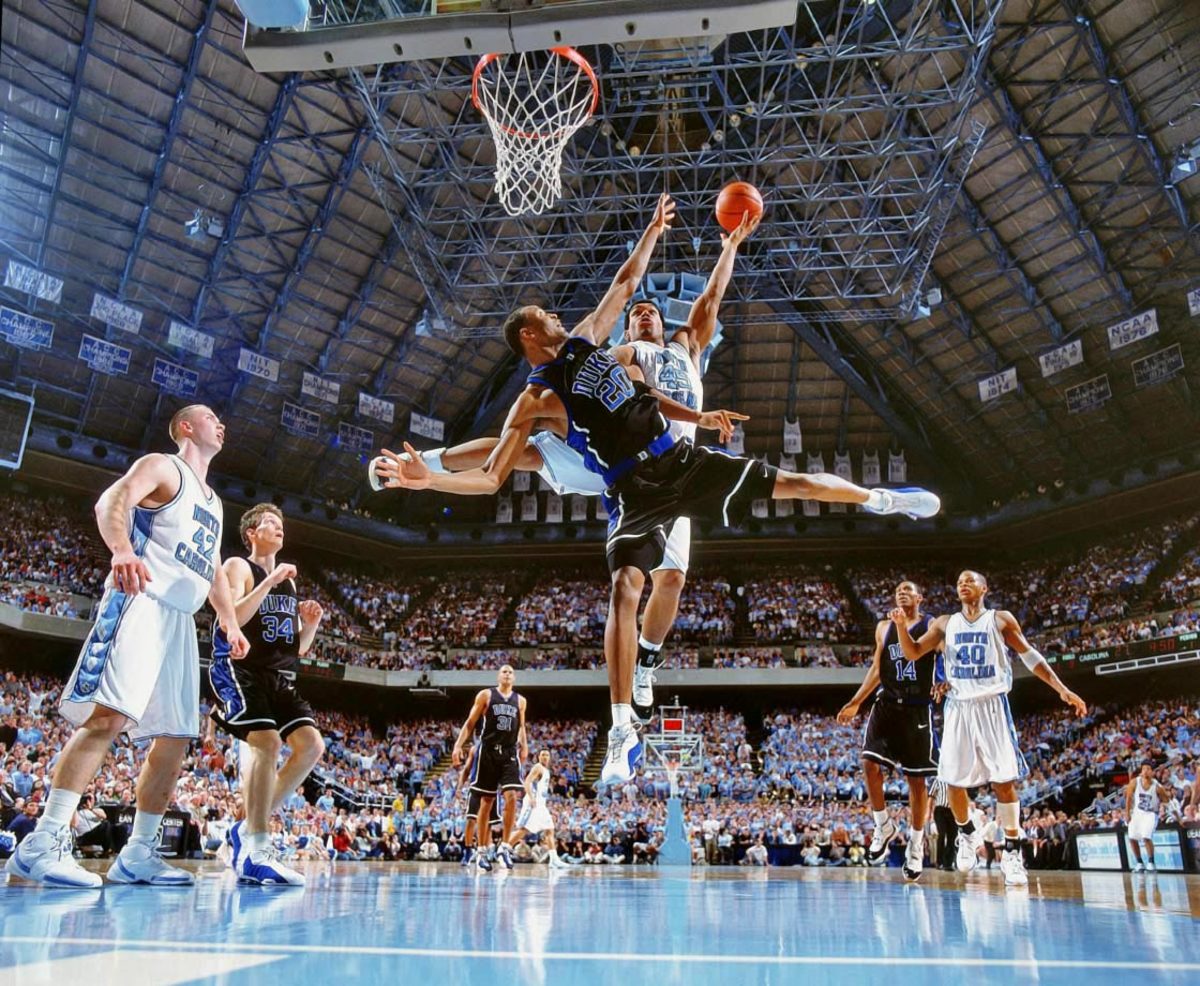
Julius Peppers and Casey Sanders
March 4, 2001
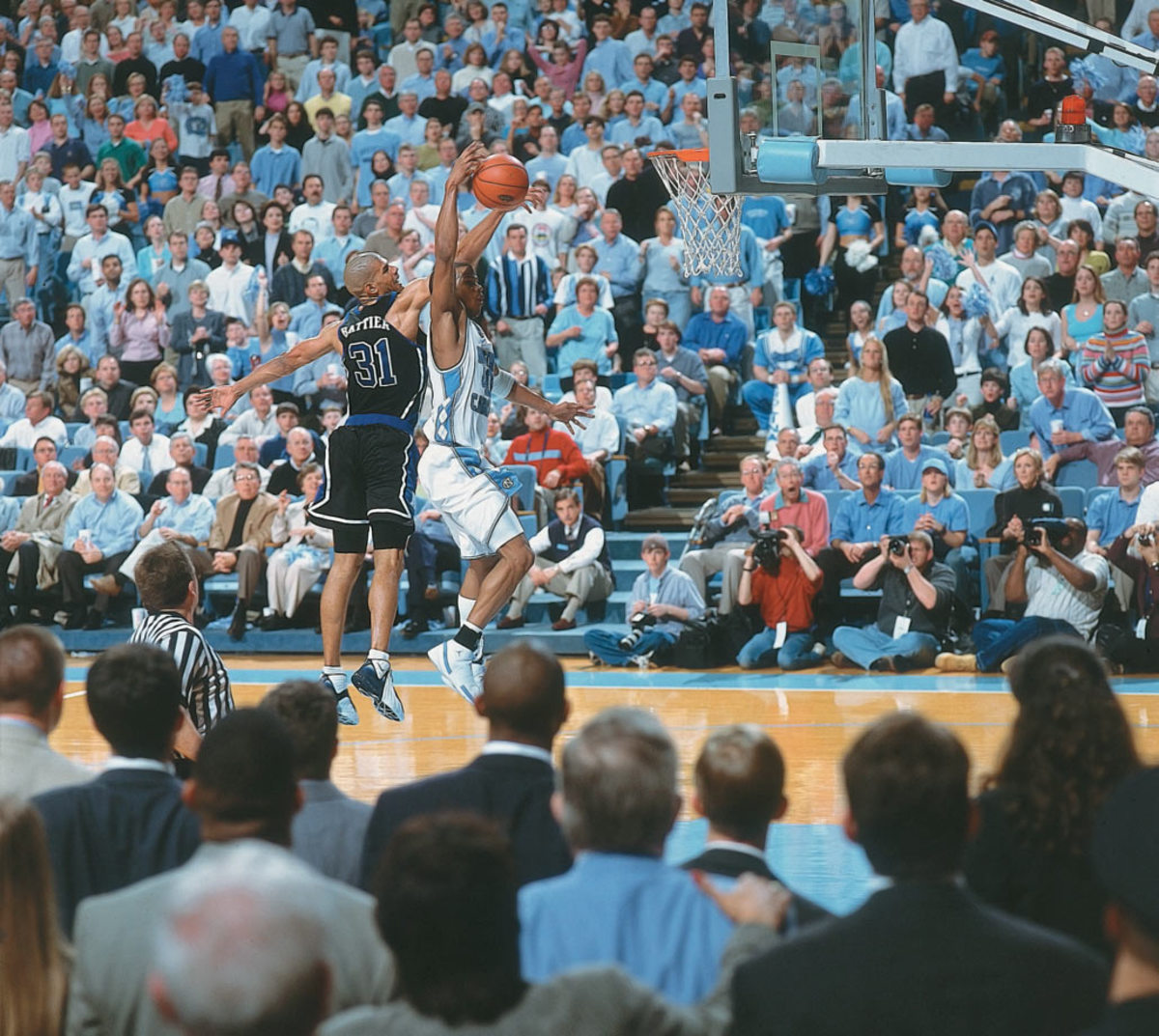
Shane Battier and Joseph Forte
March 11, 2001 (ACC Tournament)
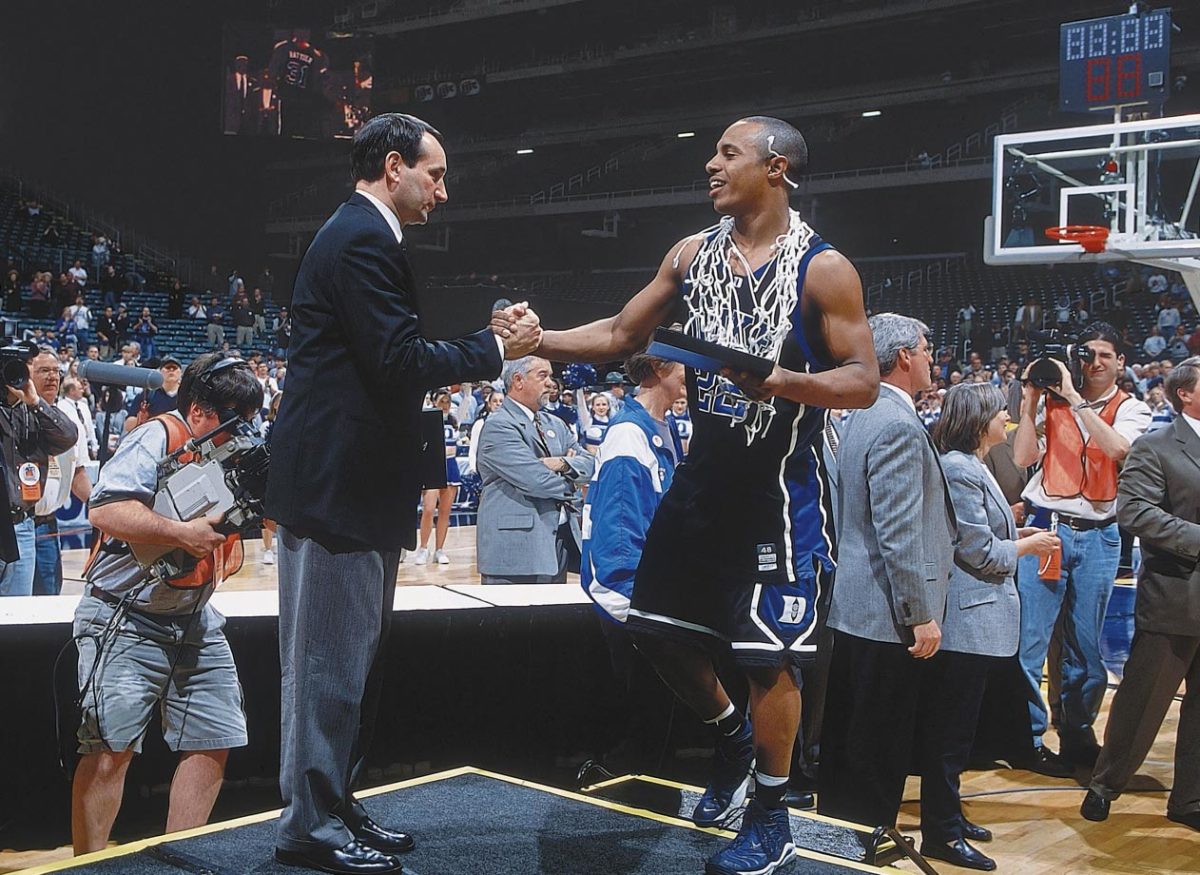
Mike Krzyzewski and Jason Williams
Feb. 5, 2004
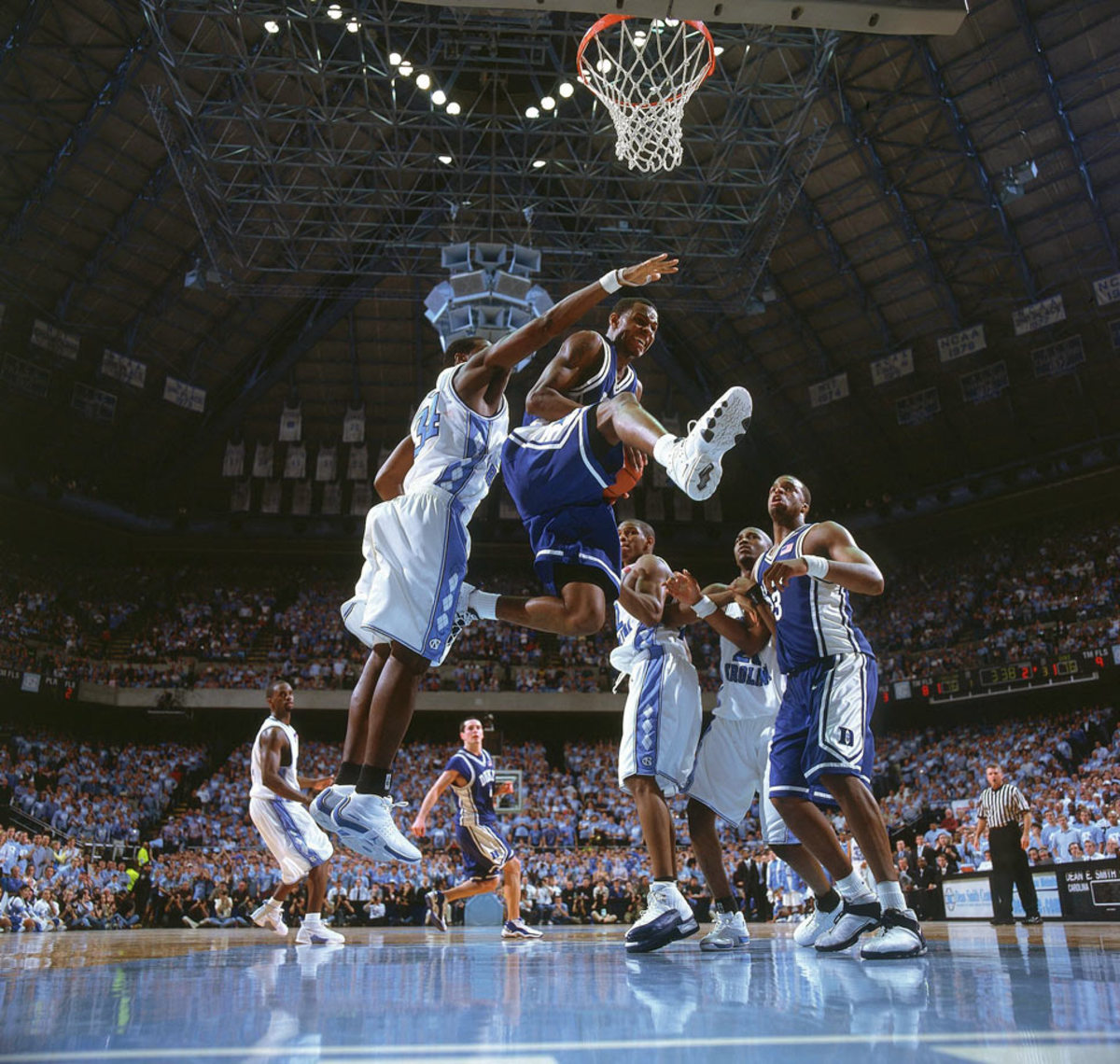
Shelden Williams and David Noel
Feb. 9, 2005
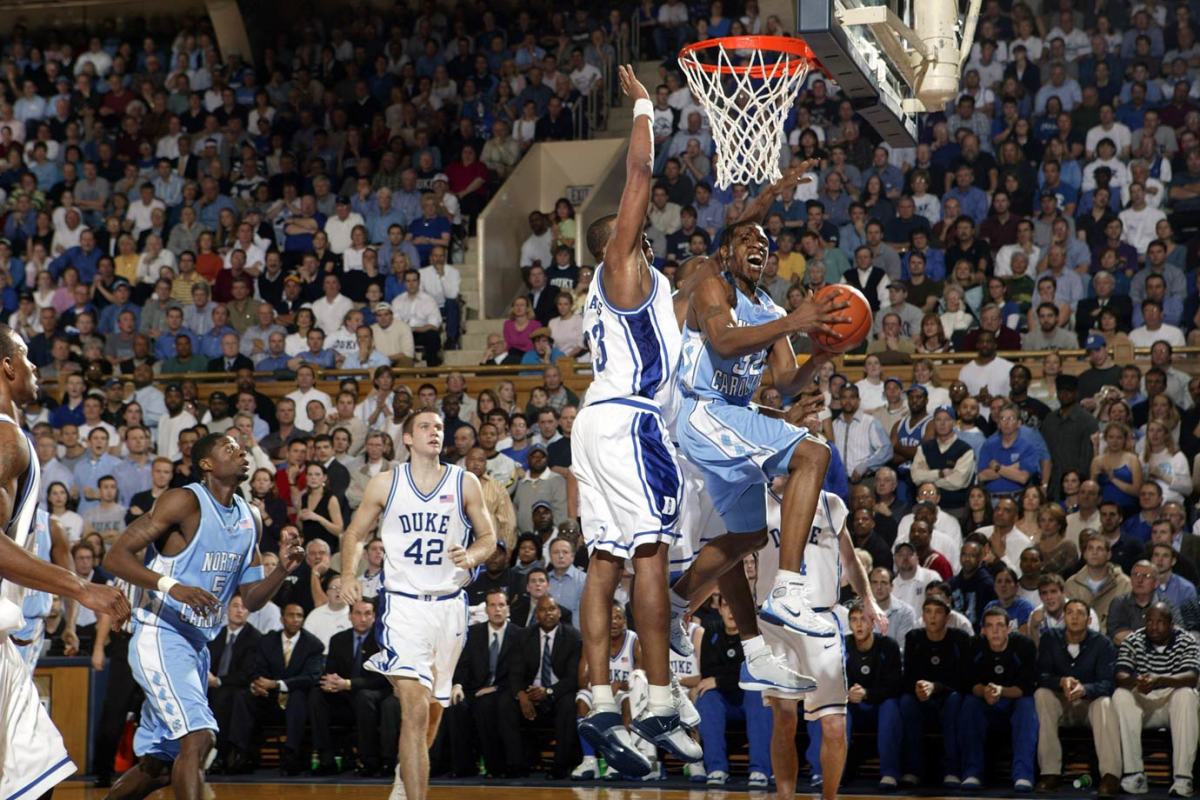
Rashad McCants and Shelden Williams
Feb. 9, 2005
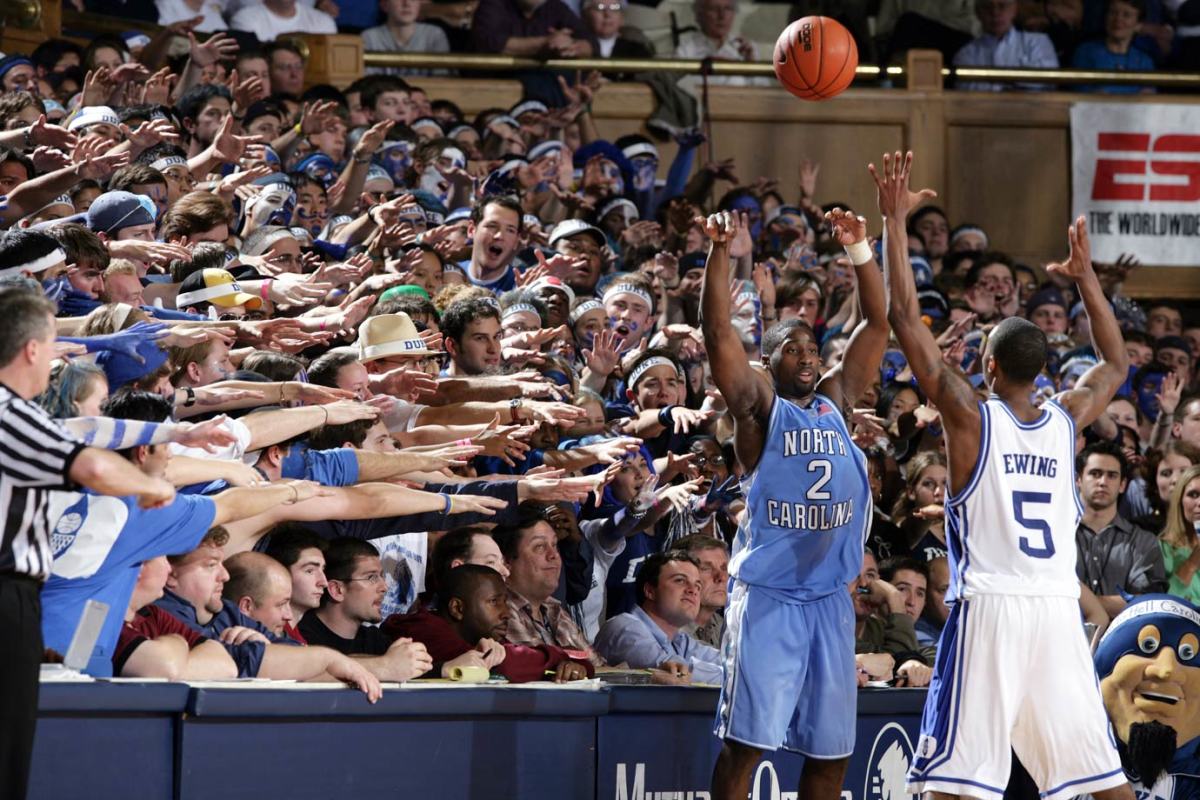
Raymond Felton
Feb. 7, 2006
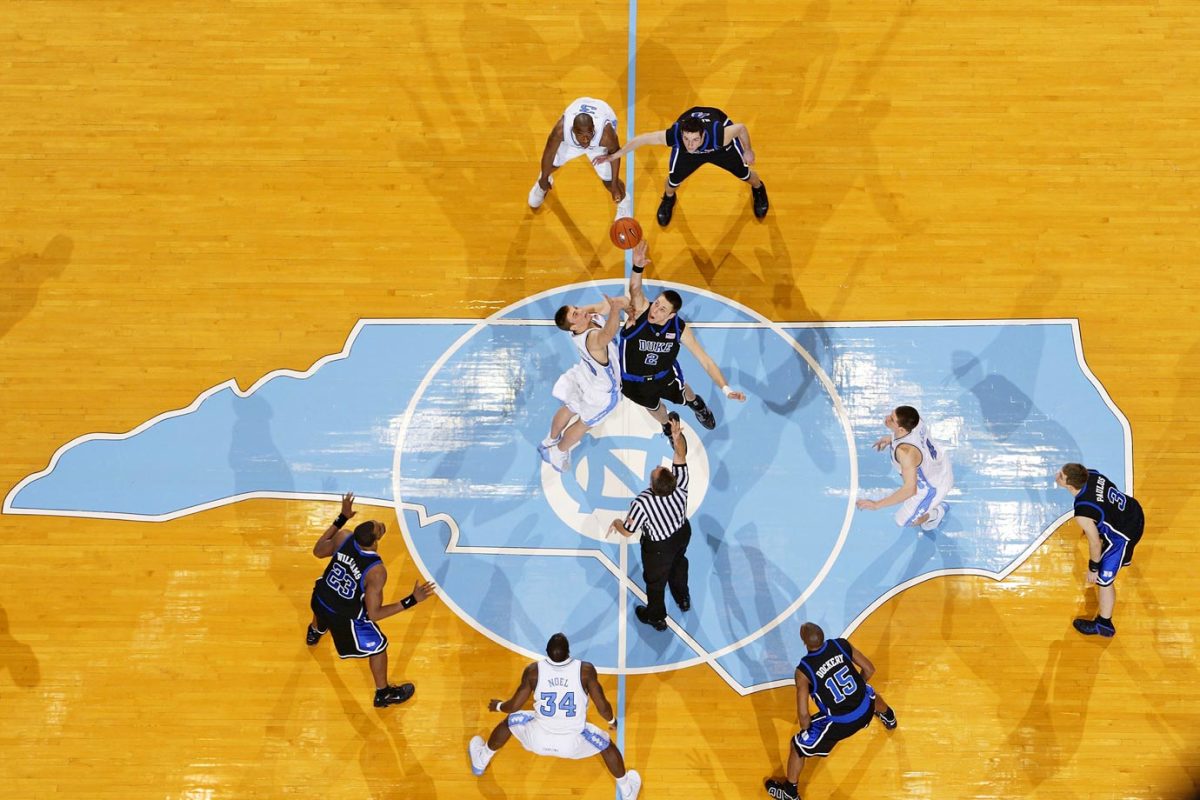
Josh McRoberts and Tyler Hansbrough
March 4, 2006
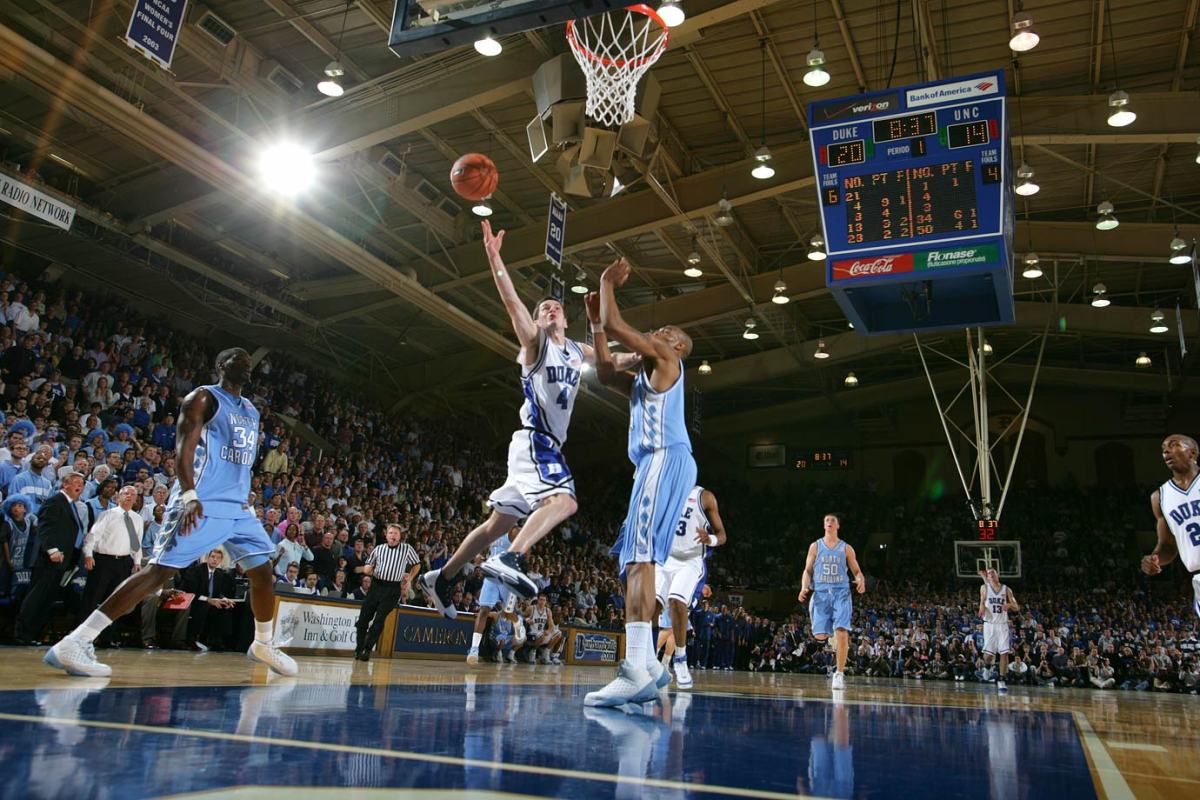
J.J. Redick
March 4, 2006
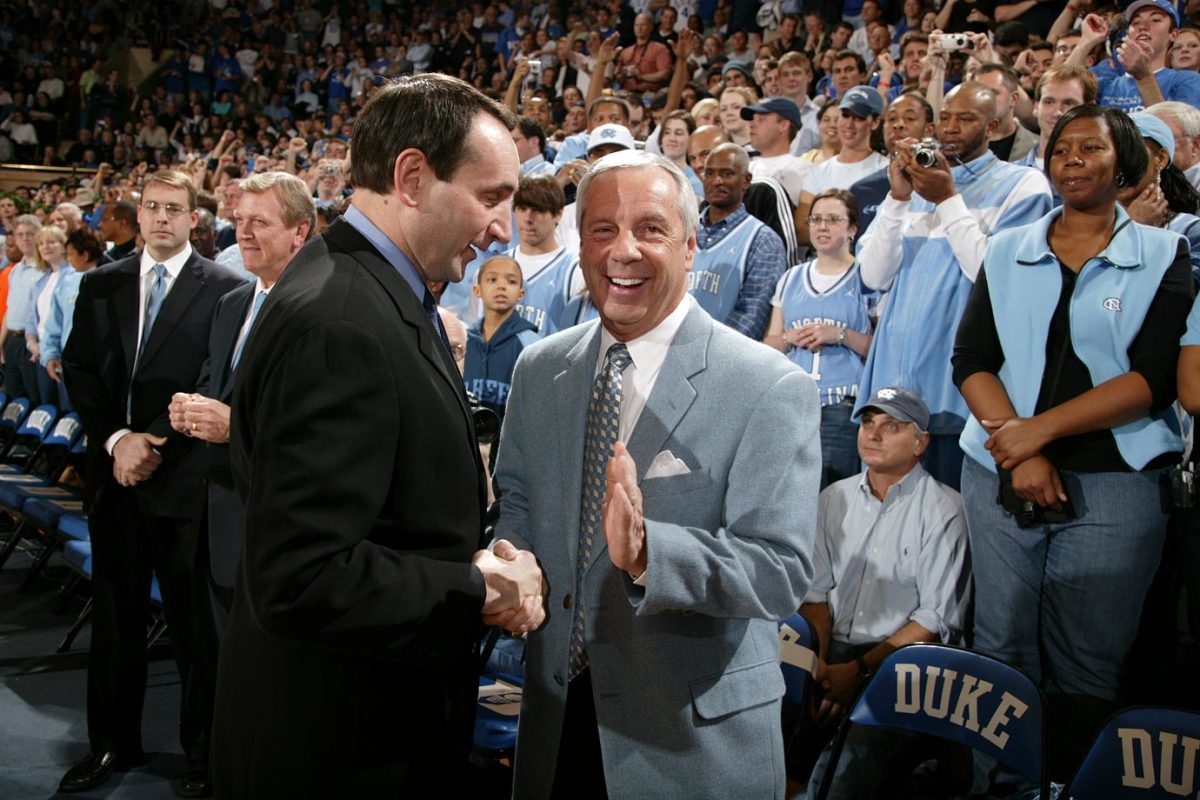
Mike Kryzewski and Roy Williams
March 4, 2007
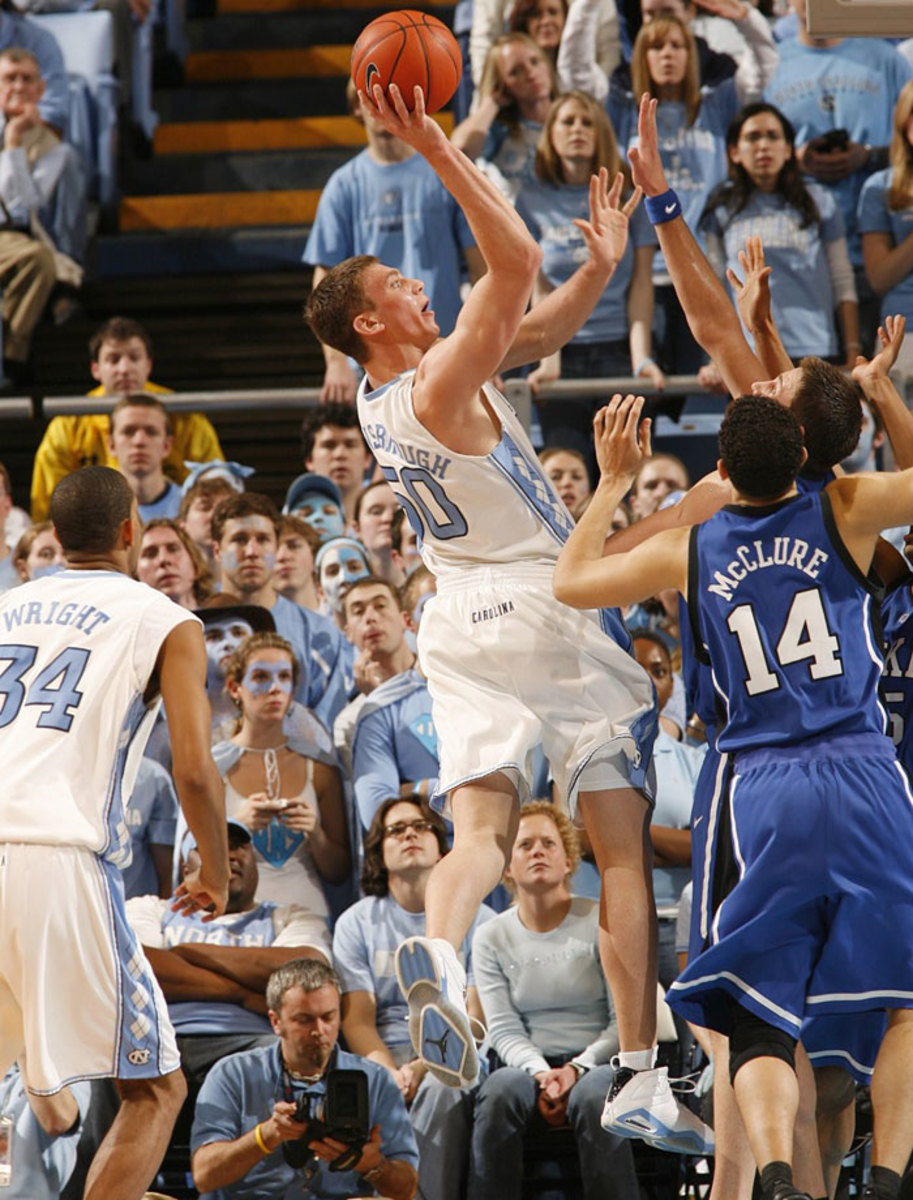
Tyler Hansbrough
March 4, 2007
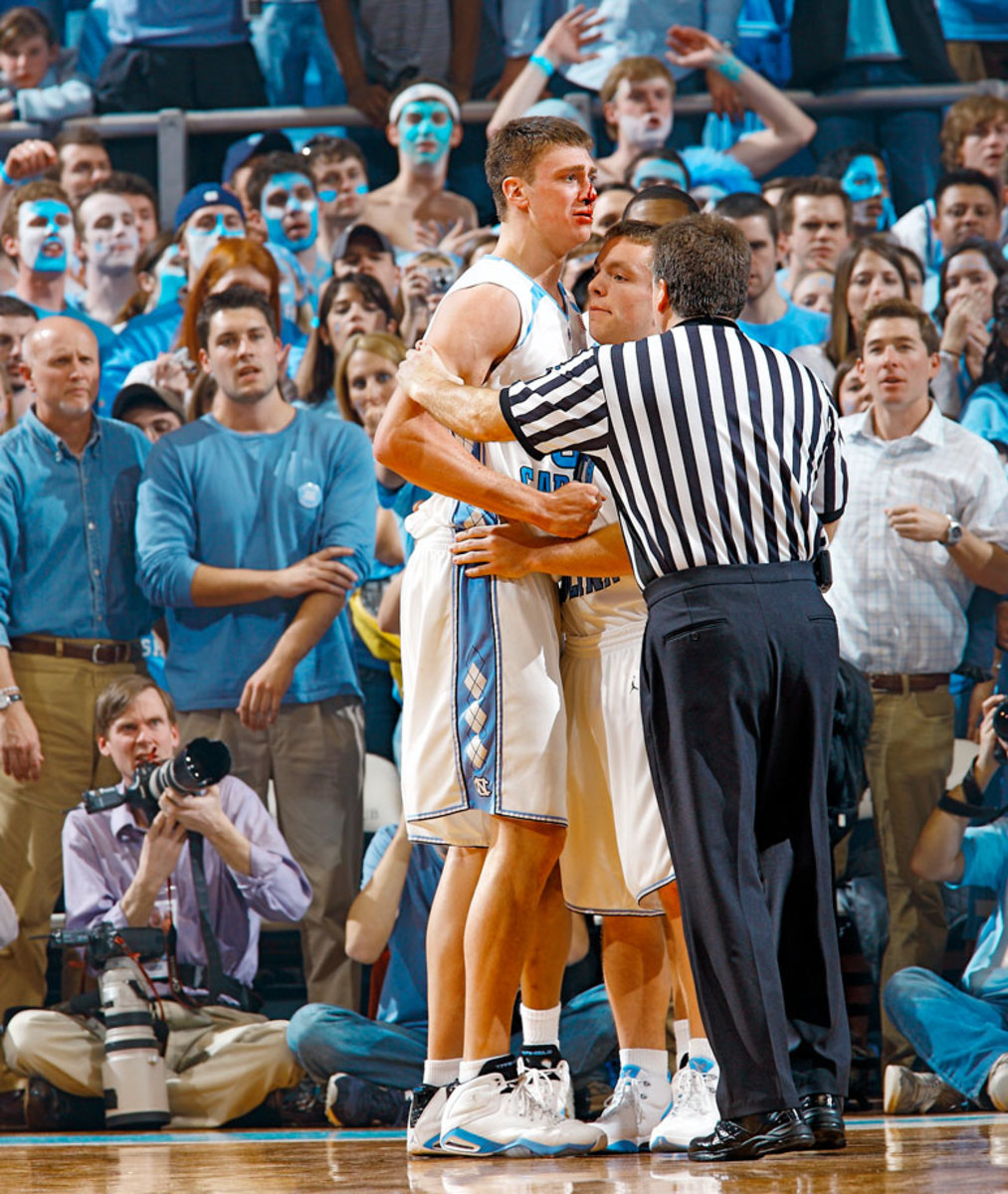
Tyler Hansbrough
March 8, 2008
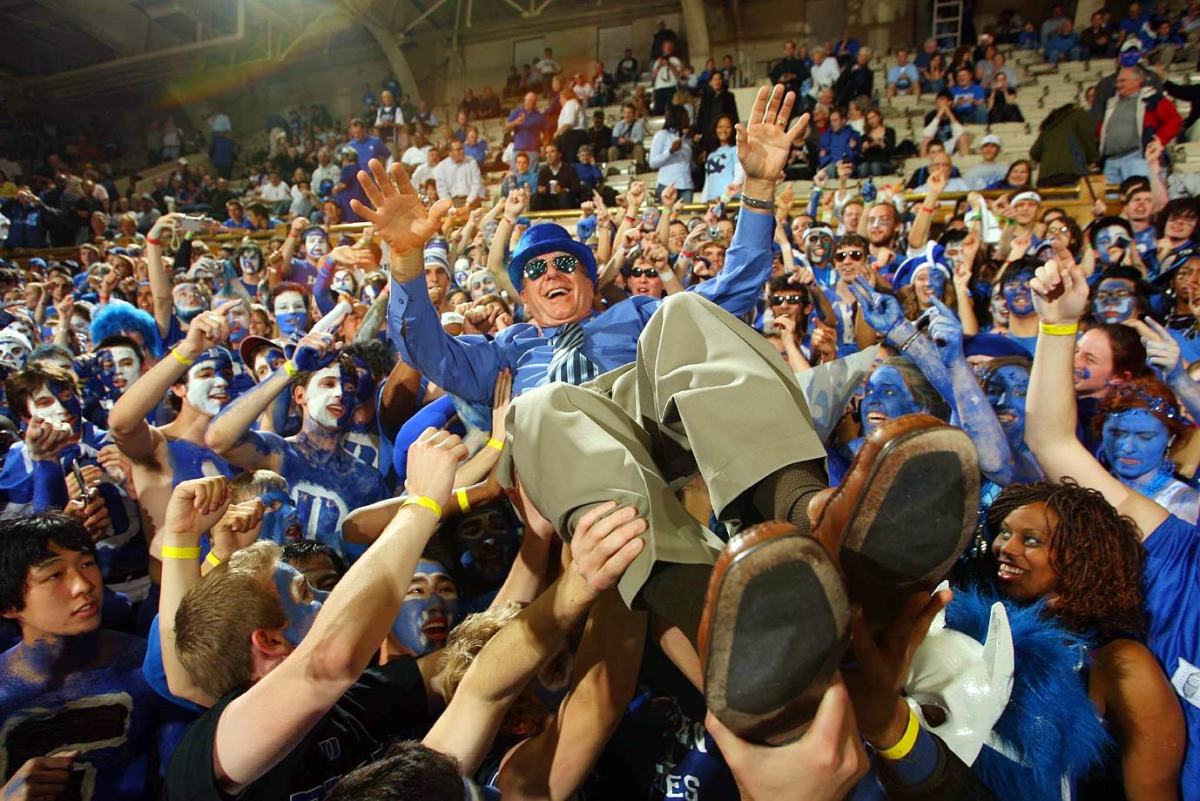
Dick Vitale and Duke fans
Feb. 11, 2009
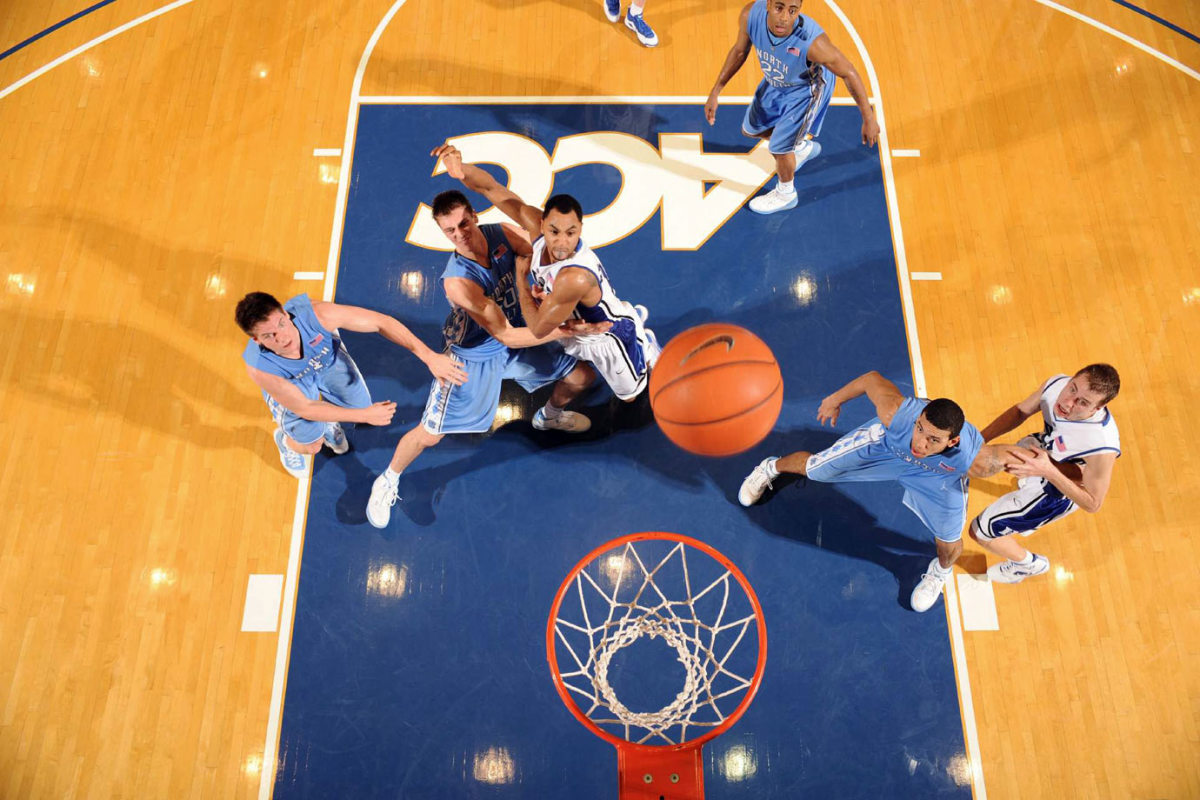
Tyler Hansbrough and Gerald Henderson
March 8, 2009
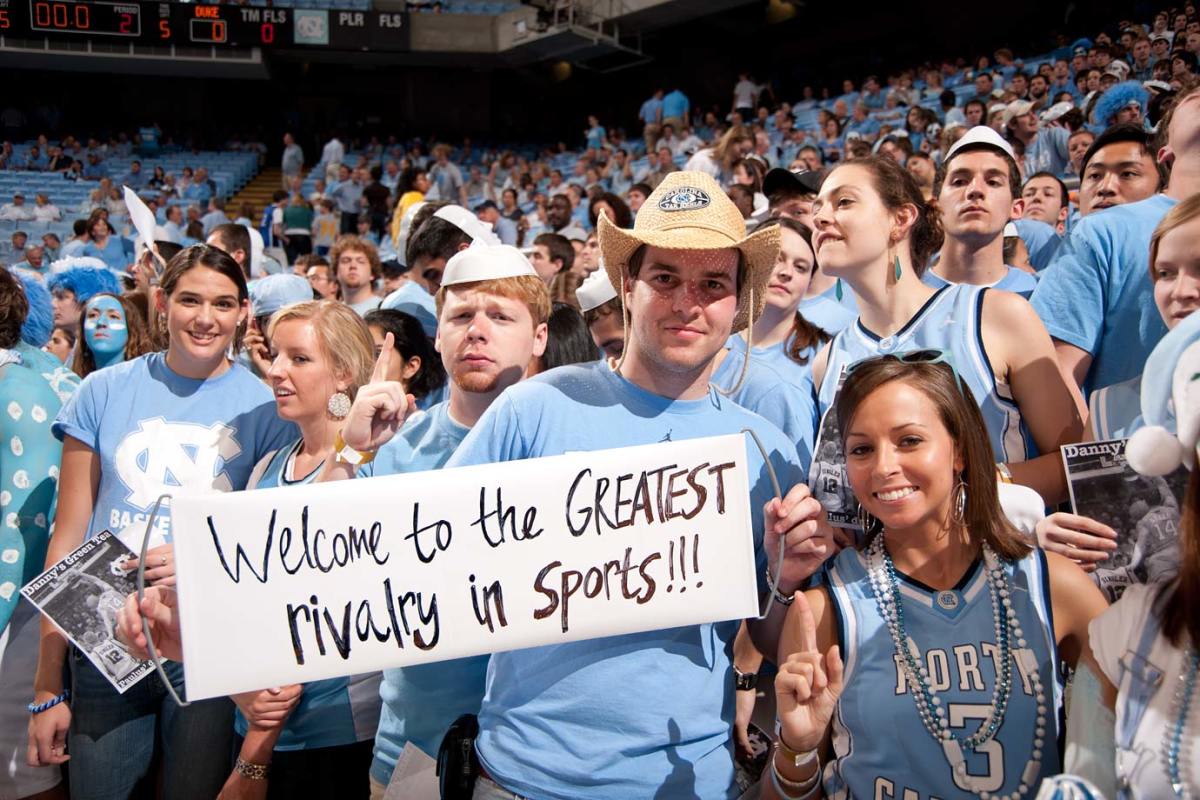
North Carolina fans
March 6, 2010
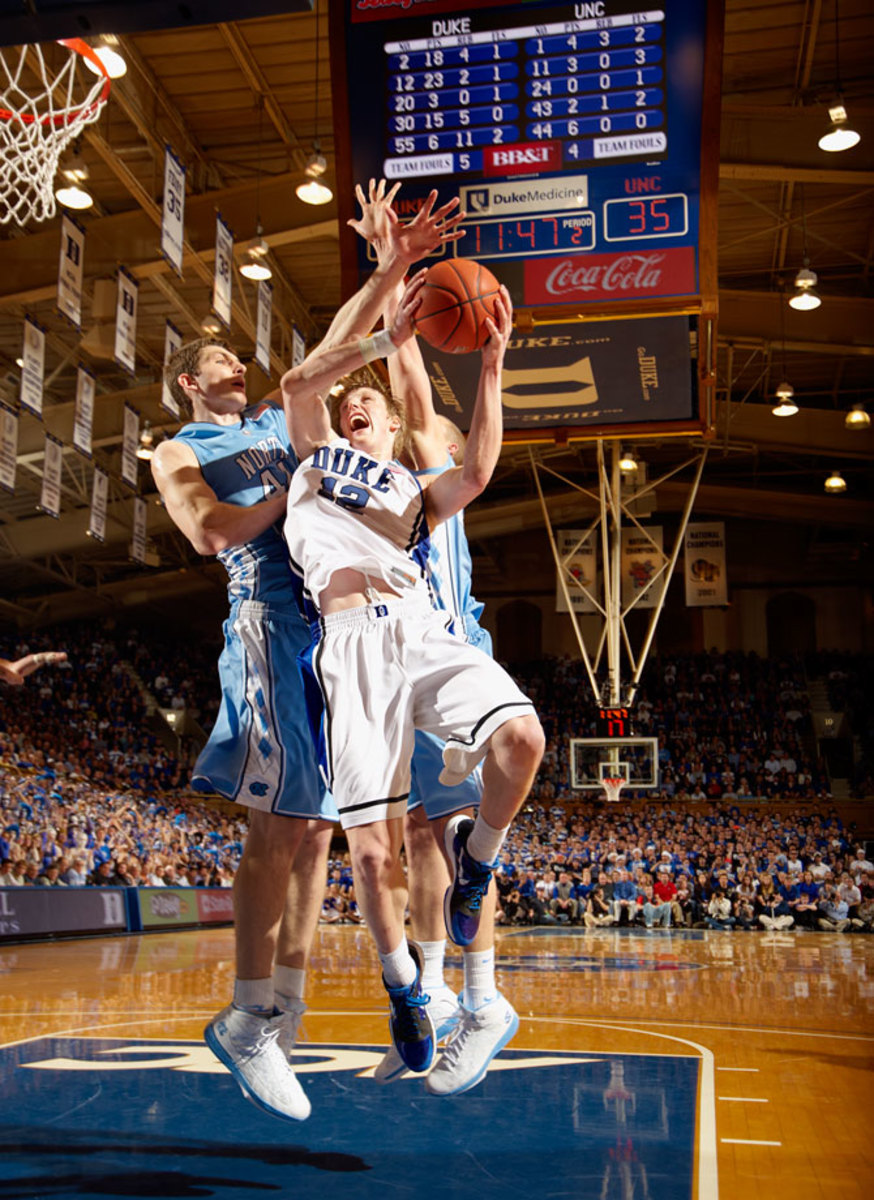
Kyle Singler
Feb. 8, 2012
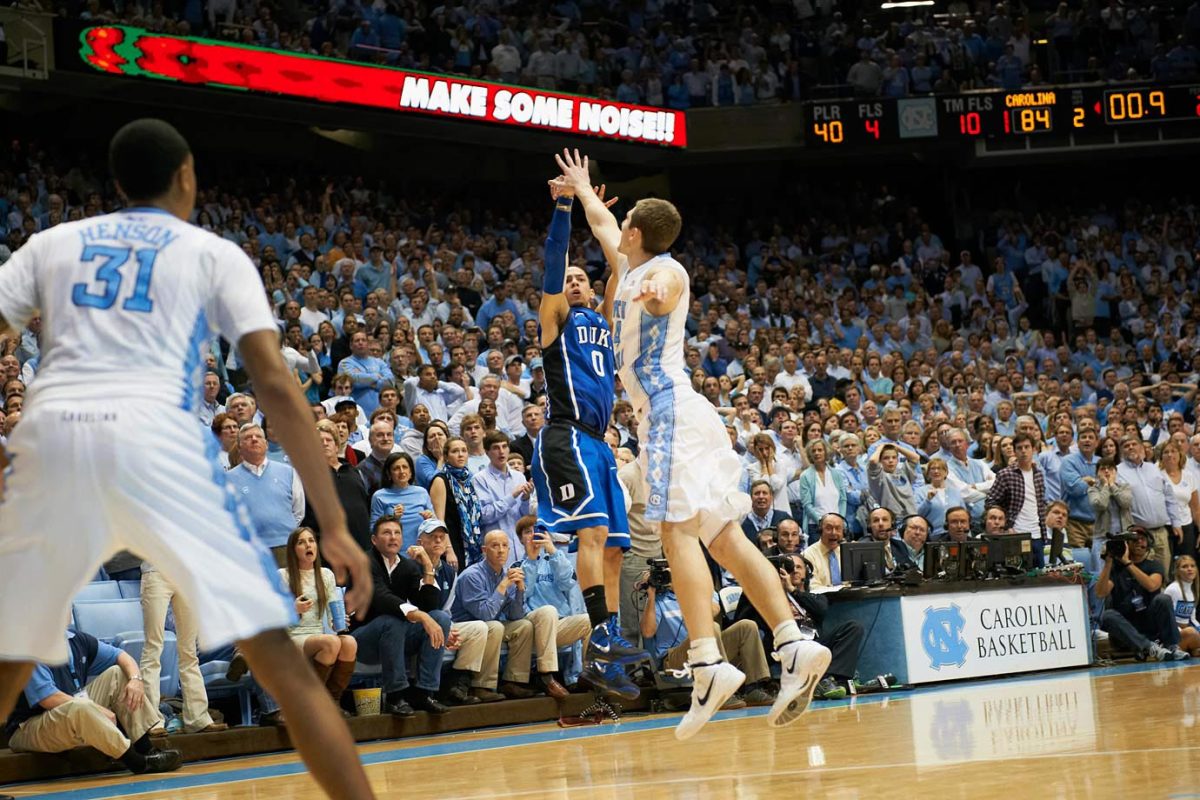
Austin Rivers and Tyler Zeller
What makes Friday’s matchup especially compelling is that it has become as rare as a Peter Luger steak, at least in the postseason. As twin titans of Tobacco Road, Duke and North Carolina were regular foes in ACC tournaments for decades, meeting four times in five years from 1988–92 (all in the finals) and five times in six years from 1998–2003. Yet since Roy Williams took over in Chapel Hill before the 2003–04 season, Duke and North Carolina have met just once in the ACC tournament, a 75–58 win for the Blue Devils in the 2011 championship game in Greensboro. (They have famously never met in the NCAA tournament, though Carolina did beat Duke in a different New York City venue, Madison Square Garden, en route to the 1971 NIT title.)
Under Williams, the Tar Heels have played ACC newcomers like Boston College (three times), Miami (three times), Virginia Tech (twice) and Notre Dame (twice) more than they have played their next-door neighbors in the past 14 years. Duke has played the Eagles, Hurricanes, Hokies and Fighting Irish twice each.
Power Rankings: Analyzing the offenses of the NCAA tournament's likely No. 1 seeds
This is due in part to the annual excellence that often leaves the rivals on opposite sides of the conference tournament bracket and thus requiring that any matchup take place in the championship game (Friday’s showdown will be just the second semifinal matchup between the two in the past 32 years, compared to eight in the title game).
However, it also is one of the unfortunate and unintended consequences of conference realignment. The same football-driven strategy that has swelled the ACC’s ranks to 15 members and its coffers to previously unimagined heights thanks to TV money has also enabled many of those programs to invest in their basketball programs as never before, creating a behemoth of a league that this year was the best in the country and could send as many as 10 of its members to the NCAA tournament. The ACC’s expanded footprint has also convinced the league to move its cherished postseason tournament north of the Washington D.C. area for the first time in the league’s 64 years, and it will be back in Brooklyn next year.
• Frank Mason III, Lonzo Ball lead SI's 2017 All-America teams
The ACC has successfully elbowed the Big East out of the Big Apple’s college basketball conversation this week. While that reconstructed league holds its tournament for the 35th straight year at the Garden in midtown Manhattan, several of its one-time members were competing with and against the sport’s bluest-blooded royalty in an outer borough. New York City has long liked to brag that it is the “mecca of basketball”, but it has never seen a matchup quite like this.
After his team’s win, Williams admitted that he wasn’t sure how often he had faced Duke in the ACC tournament (“once or twice”) and said, “I can’t even remember where it was.”
He—and a lot of other people—should have no trouble remembering this one.
